


























JESSICA MARSHALL
A TRANS-TASMAN battle is brewing over a proposal to introduce changes to packaging and labelling regulations for infant formula.
Earlier this year, Food Standards Australia New Zealand (FSANZ) issued several proposals to change the standards for how infant formula is marketed and sold to consumers.
Several NZ infant formula manufacturers oppose the proposed changes: they come after a review of the standards, which according to FSANZ’s 445-page approval report, were “functioning adequately”, however there was room to clarify some standards and improve alignment with newer international benchmarks.
The proposed new and altered standards include the introduction of new restrictions on the labelling of ingredients within infant formulas.
FSANZ claims in its Decision Regulation Impact Statement that, currently, the labelling and packaging of infant formula are misleading for parents and caregivers.
“For example, consumer research has shown that the marketing of formulas for colic and reflux can suggest to some caregivers that what the infant is eating must be causing the problem and can imply that changing (either from another infant formula or from breastfeeding) to a specialised formula for the condition will solve the problem,” the statement says.
The statement also claims that the similarities between packaging for toddler formula and infant formula – which are often displayed next to each other in supermarkets – have led some parents and caregivers to provide their infants with toddler formula.
It also states that “the majority of caregivers find reading the nutrition information panel on

However, according to Infant Nutrition Council chief executive, Jonathan Chew, the proposed standards would undermine the ability of parents to make informed choices regarding the food they give their children.
“Several New Zealand manufacturers of infant formula believed this would have significant unintended consequences for their businesses, both domestically and overseas,” Chew told Dairy News
Thus, late last month, at the trans-Tasman Food Ministers meeting in Adelaide, New Zealand Food Safety Minister Andrew Hoggard voted to reject the standards, something the industry supports.
However, the Australian Ministers – who outnumber Hoggard nine to one – blocked that
move, meaning New Zealand will be left to come up with a modified standard.
“It is unfortunate that the Australians believed that in order to protect breastfeeding, you need to make formula as unappealing and complicated to use as possible,” says Chew.
According to Chew, the new standards put Australia out of alignment not only with New Zealand, but also the European Union, the US, and other regions.
“The Infant Nutrition Council believes you can promote breastfeeding without creating confusion and chaos for parents who – for whatever reason – need to use infant formula as the only safe and healthy alternative to breastmilk,” he adds.
Questions emailed to Hoggard’s office remain unanswered when we went to print.
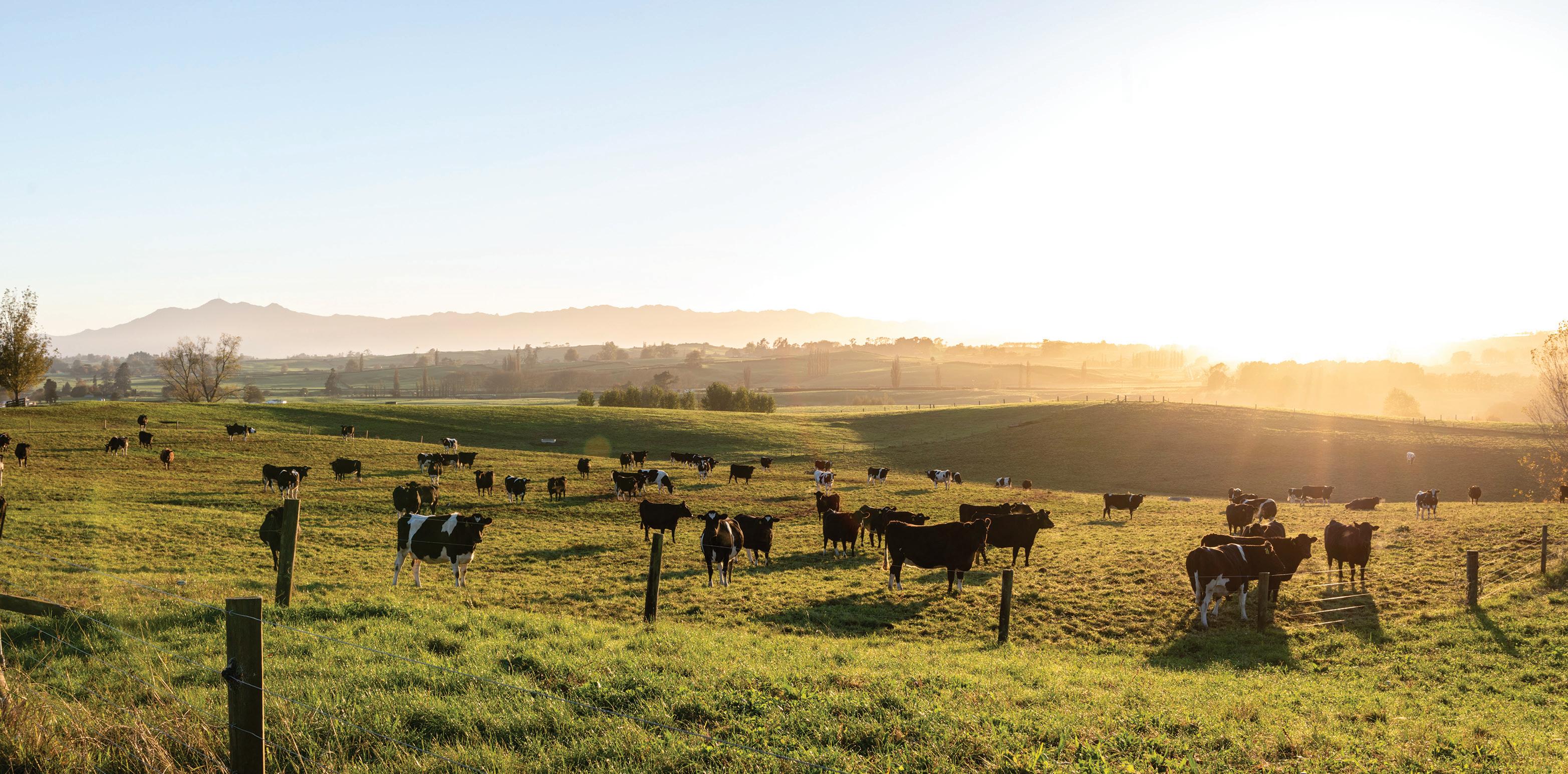
JESSICA MARSHALL
FEDERATED FARMERS is calling for transparency from Otago Regional Council amid a debate over proposed freshwater rules.
But the Otago Regional Council says it disagrees with claims from Feds that residents and landowners have been kept in the dark, saying there has been an open consultation process.
Luke Kane, Federated Farmers Otago president, says that since the release of draft regulations, significant changes have been made, but because of the “secretive nature” of the consultation process, the local community has been left in the dark.
“This is serious stuff and there needs to be some urgency,” he says.
“The rules are scheduled to come into force in October and will have immediate legal effect.”
Kane says he would like to know how the principle of Te Mana o te Wai will be applied under the new regulations.
Te Mana o te Wai, introduced by
the previous Labour Government, encompasses six principles relating to the roles of tangata whenua and other New Zealanders in the management of freshwater.
“Our local councils need to be up front and let our community know how they plan to give effect to Te Mana o te Wai and how much it’s going to cost us,” Kane says.
“Federated Farmers are incredibly concerned about how the principle of Te Mana o te Wai may be applied in the Otago region and what it might mean for our community.’
He says that council engagement has led to a view that no treated wastewater that has passed through a human body can be discharged back into local waterways.
“This would mean that wastewater, despite being treated to an incredibly high standard, would need to be discharged to land at significant cost to ratepayers.”
Additionally, he says, there are concerns for irrigated farmers that water that has been drawn from
one waterway will not be able to be discharged into another.
“This is because of beliefs that each waterbody has a distinct mauri, or spirit, and mixing mauri would reduce the mana of the water,” he explains.
However, Otago Regional Council general manager planning and transport, Anita Dawe, says the consultation on Te Mana o te Wai took place in late 2020 and 2021, as part of the development of the council’s Regional Policy Statement.
“The process involved a number of meetings across Otago to share the draft policy statement and get feedback, as well as online feedback options,” Dawe told Dairy News.
She says that the National Policy Statement for Freshwater Management 2020 requires every regional council to include an objective that describes how the management of freshwater will give effect to Te Mana o te Wai.
She says that when the statement was notified, Te Mana o Te Wai was consulted on, with submissions and hearings, resulting in amendments.
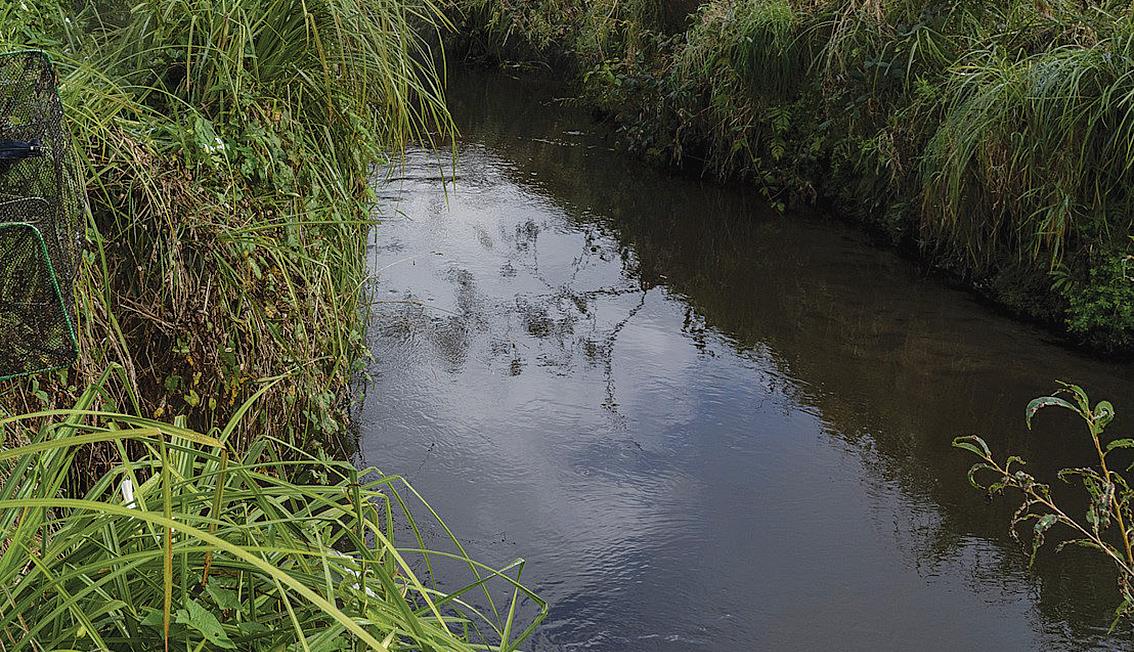
Currently, Te Mana o te Wai is under appeal to the High Court for how it has been interpreted for Otago.
Otago Regional Council chairperson Gretchen Robertson told Dairy News that because Te Mana o te Wai will largely be implemented through the Land and Water Regional Plan, currently in development, it is difficult to tell how it will be applied.
“It is important that the draft plan has an aspirational goal and a practical lens. This includes for activities such as wastewater discharges,” Robertson says.
“Like all regions, investment in wastewater infrastructure upgrades is needed for systems that will not meet the needs of current and future communities,” she adds. “Despite the unfounded criticism, the plan is actually about creating appropriate consenting pathways, acknowledging that upgrades will happen over realistic timeframes and, on a scale, commensurate with their impacts.”
HOLSTEIN FRIESIAN NZ, and herd improvement co-operative LIC have launched a joint sire proving scheme that aims to select and prove Holstein Friesian bulls for New Zealand dairy farmers.
The scheme will use genomic screening to provide farmers with elite Holstein Friesian bulls for artificial
breeding, whilst giving LIC an opportunity to tap into diverse cow families in Holstein Friesian NZ member herds for its breeding programme.
While the Discovery Project – another HFNZ/ LIC joint venture –requires high-BW heifer calves to populate the programme, the new Holstein Innovation
project focuses on diversity: while bulls will still need to be of suitable genetic merit (BW), some compromise can be made.
Bull calves should be nominated as soon as they are born, and HFNZ and LIC will mutually agree which nominated bulls are to be genomically screened and later purchased, if
successful, with up to five young bulls entering LIC’s Sire Proving Scheme (SPS) annually. Bulls have the potential to be marketed from one-year-old through to daughter proven, both domestically or internationally, and Holstein Friesian NZ will have the ability to sell semen to members in the bull’s first year of


semen production.
Holstein Innovation will also include an accompanying female programme, which will see up to 200 nominated females genomically screened annually.
Mating of the nominated females will include the option to utilise LIC’s elite young sires, or daughter proven sires, at no cost.
Resulting progeny –both heifers and bulls – will be genomically screened.
HFNZ Holstein Innovation Committee Chair Doug Courtman says Holstein Innovation will shine the light on bulls that are not traditionally sought after for marketing.
“It is an opportunity for breeders to put
forward bulls that might not have otherwise been marketed,” Courtman says. “With LIC seeking alternative bloodlines, the Holstein Friesian breed’s genetic strength will only increase.
“The elite young Holstein Friesian bulls chosen will deliver increased diversity and faster rates of genetic gain on farm.”



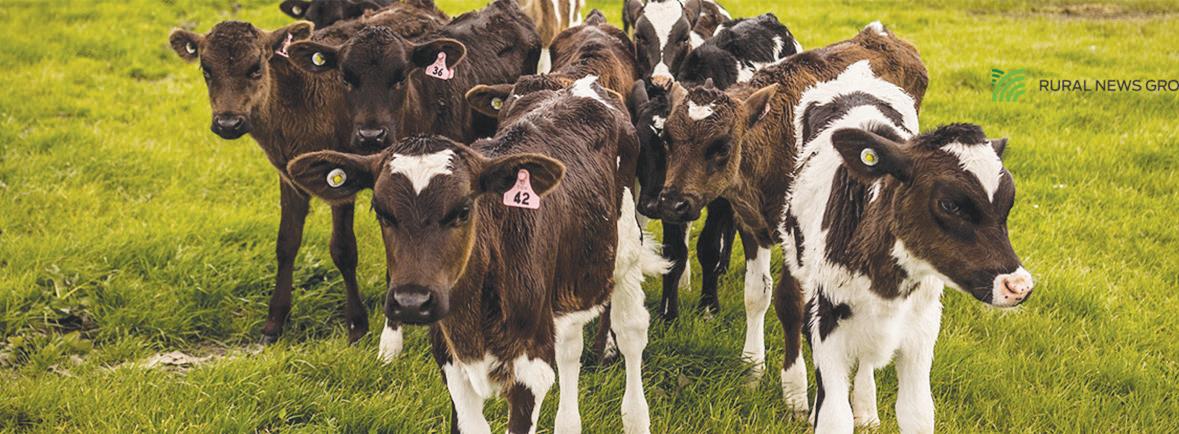
we now need to grow sales.
FARMER OWNERS of the Dairy Goat Co-operative (DGC) in Hamilton say they believe in the business’s long-term future.
The 57 farmer shareholders, who supply milk to DGC, are banking on a new board and leadership team to guide the NZ goat milk sector back to profitability after three challenging years which saw some farmer shareholders forced out of business.
DGC’s new chair and Te Aroha farmer René Burri says the past three years have been very tough on dairy goat farmers.
“From a financial perspective, morale has been pretty low,” he told Dairy News
The financial pressures forced some farmers to exit the industry while others offloaded milk supplying shares to fellow shareholders.
Burri believes the worst isn’t over: the next 12 months will remain extremely challenging.
However, he says farmers are hopeful of a turnaround in the business.
“As farmers, we believe in the long-term future of DGC. We know we have very good milk, great manufacturing assets and
“We know there’s no magic bullet and that the next 12 months will be challenging but we are very excited about five years from now.”
“As farmers, we believe in the long-term future of DGC. We know we have very
good
milk, great manufacturing assets and we now need to grow sales.”
Burri says that every goat farmer believes in the health benefits of goat milk.
But there’s no point in having the best product in the world but not converting that into sales and high farmgate returns, he adds.
DGC hired respected agribusiness leader Alastair Hulbert as its new chief executive three months ago.
Hulbert and his team are tasked with creating a two-pronged strategy: a 12-month strategy to boost farmer returns and a longer 5-to-10-year strategy on diversifying DGC’s offering around the globe.
Today, DGC is an infant formula and
ingredients supplier to 30 countries. The leading markets for baby formula include Taiwan, Poland, Thailand, UK and Korea.
DGC sells goat milk ingredients to China and Korea where it is used in sports nutrition and pet formula.
Infant formula has been the co-op’s mainstay, but its biggest market China was thrown into disarray when Covid surfaced. The Daigou channel, where returning Chinese visitors took cans of infant formula back to their homeland, dried up.
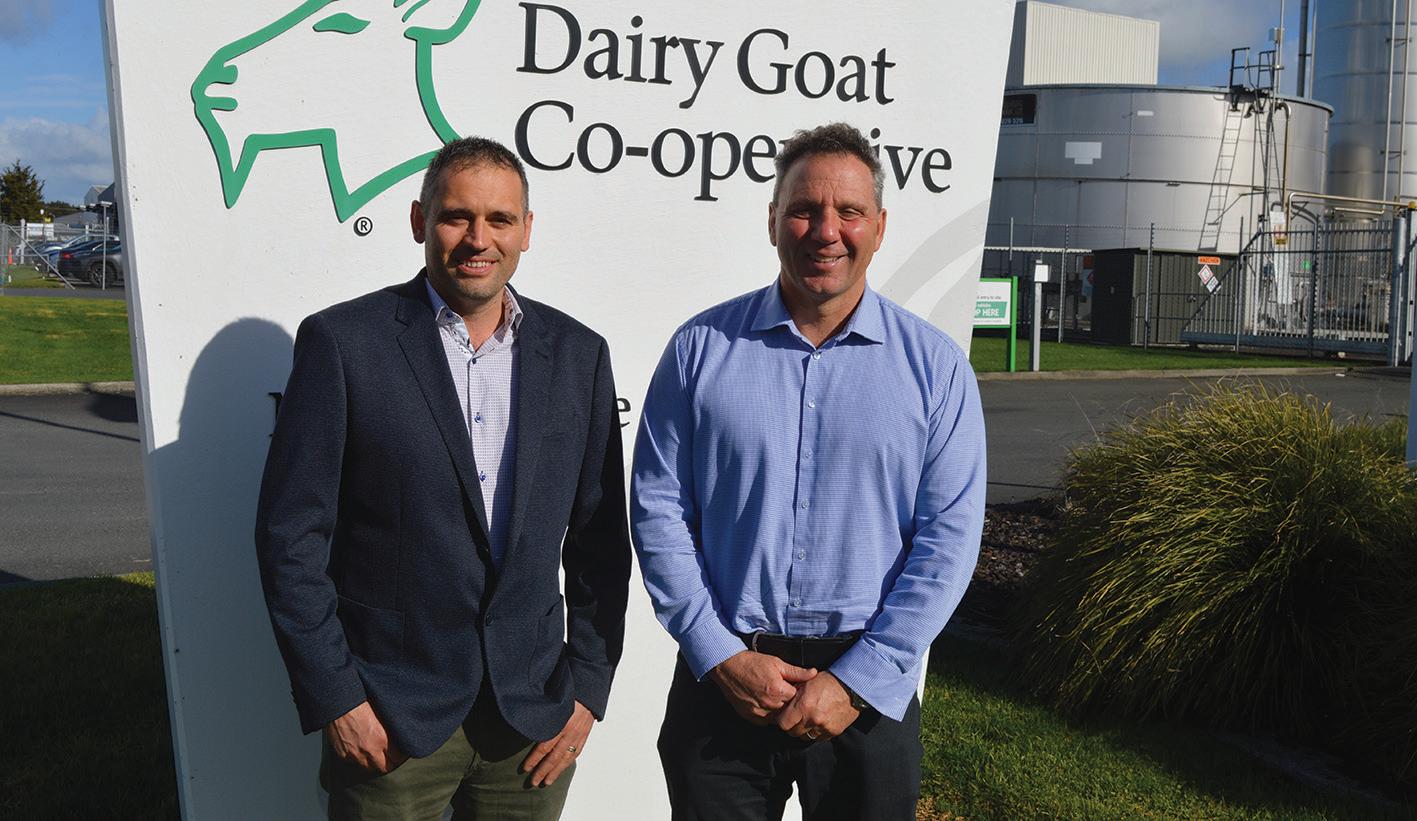
THE DAIRY goat sector is banking on the results of a program of scientific trials to boost sales.
The GIraFFE clinical study, part of a Primary Growth Partnership programme (now the Sustainable Food and Fibres Futures) launched in 2018, looks to prove the positive link between consuming goat milk formula and lower instances of eczema in babies.
DGC chief executive Alastair Hulbert says previous studies have indicated that drinking goat formula may reduce the likelihood of eczema.
Hulbert says DGC hopes to promote the findings via healthcare professionals around the globe.
He thanked the Ministry for Primary Industries (MPI) for supporting Caprine Innovations NZ (CAPRINZ) - a multi-year, $29.65 million investment programme between MPI and DGC. Through the partnership, 40% of the funding is provided by the Government with the balance provided by DGC.
The end goals include improving the health and well-being of families, delivering a range of benefits such as growing research and farming capability and increasing export revenue across the New Zealand dairy goat milk industry.
The programme has also helped DGC farmers access tools to improve financial benchmarking and feed issues on farm.
Hulbert describes it as ‘a perfect storm’. The collapse of the Daigou channel was compounded by the loss of State Administration for Market Regulation (SAMR) registration which infant formula exporters require to send products into China.
“This removed a large part of our sales into China,” he says.
DGC still has China in its sights: it plans to submit another SAMR application. But at the same time, the co-op is looking to boost infant formula and ingredient sales in other countries.
This month, Burri and Hulbert will visit markets in Asia and will later visit Europe in October.
Hulbert says infant formula will remain the
mainstay of DGC.
“That’s what we are good at, that’s where our legacy and science come from,” he says.
“But we are looking at boost ingredient sales and third-party manufacturing to utilise our plant to full capacity.”
Another key part of the short-term strategy is to lift farmer returns and restore milk production to full capacity.
For the past two seasons, farmer suppliers were asked to cut back supply to 80%. This year,
farmer suppliers agreed to further reduce supply to 65%.
With a reduced farmgate milk price, farmers have been facing a double whammy.
Hulbert says DGC staff are “very cognisant” of the pressures facing farmer shareholders.
“We are focused on turning things around. We’ve got the support of a very good board for our plan to build sales, lift farmgate returns and increase milk volumes from farmers.”




ADAM FRICKER
A STALWART of rural journalism, David Anderson, has died at home in Timaru following a prolonged illness.
Until illness forced his retirement earlier this year, David had been working as consulting editor of Rural News, but his career in rural and political roles was long and varied.
Raised on a sheep and beef farm near Timaru, David started his career as a junior reporter with the fledgling Rural News in 1991, freshly graduated from a journalism course – after a period farming, shearing and working in the meat processing industry. Rural News was in the process of changing, with the aim of tackling the real issues affecting the coun-
try’s all-important rural sector, and David’s nose for news was a perfect match.
His first editor, Ron Clark, was a true newspaper man who believed that NZ’s farming sector lacked serious coverage of the issues that it faced, and that Rural News was the perfect outlet to do this.
Ron’s hard-hitting and uncompromising approach to news rubbed off on David, who took the same approach over his own career in rural journalism – covering the good, bad and ugly of NZ’s agribusiness sector without fear or favour and ‘keeping the buggers honest’. One headline David liked to recall from those early days, one that nicely sums up the fear-

Ron and David shared, was the classic ‘Why bankers are bastards!’
Farmers loved that one more than the publisher did: the banks wouldn’t advertise with Rural News for years
cally, David’s rural journalism career began when a new Nationalled government was picking up the pieces of a shattered economy and severely depressed rural sector hit by major reforms, in the aftermath
of six years of a Labourled government. It was a rich period of change for a newsman: farmers were unhappy with the producer boards and the fact they could not even vote directly for their own representatives. They changed the system, believing it would see much better voter turnout and higher quality representation. Fast forward to today, and, as David recently noted, a mere 12% of red meat producers bothered to vote at the latest Beef+Lamb NZ annual meeting.
Another big change David’s career spanned was the painful formation of Fonterra, from the numerous small dairy co-ops dotted throughout the country, into one of the biggest and most suc-
cessful dairy companies in the world.
Throughout his career, David was committed to putting farmers’ interests first, taking politicians, business leaders and ‘dark-suited PR types’ to task. He himself had a few years in a ‘dark suit’ working in communications for Fonterra and, before that, in Bill English’s press team. He also worked as an independent contractor for a few years, helping clients such as the Rural Contractors Association with their media and communications work, and also served as a councilor on the Waimate District Council. More recently, he managed his brother and National MP Miles Anderson’s successful 2023 campaign for the Waitaki seat.
When he returned to the Rural News editor’s
chair a few years back, the Hound’s teeth were sharpened – the ‘woke’ in particular getting savaged.
There are too few of David’s kind left in the media industry – old school journalists chasing the story, not virtue signaling – and he has left an indelible mark on rural journalism. He will be missed.
To quote David’s final editorial: “It is impossible to summarise more than 30 years of this dynamic sector’s events and happenings in a few words. However, what I can say is that things will continue to change, farmers will adapt and the industry will survive and thrive.
“It’s been an absolute privilege to have played a small role in NZ’s most important and vibrant sector.”
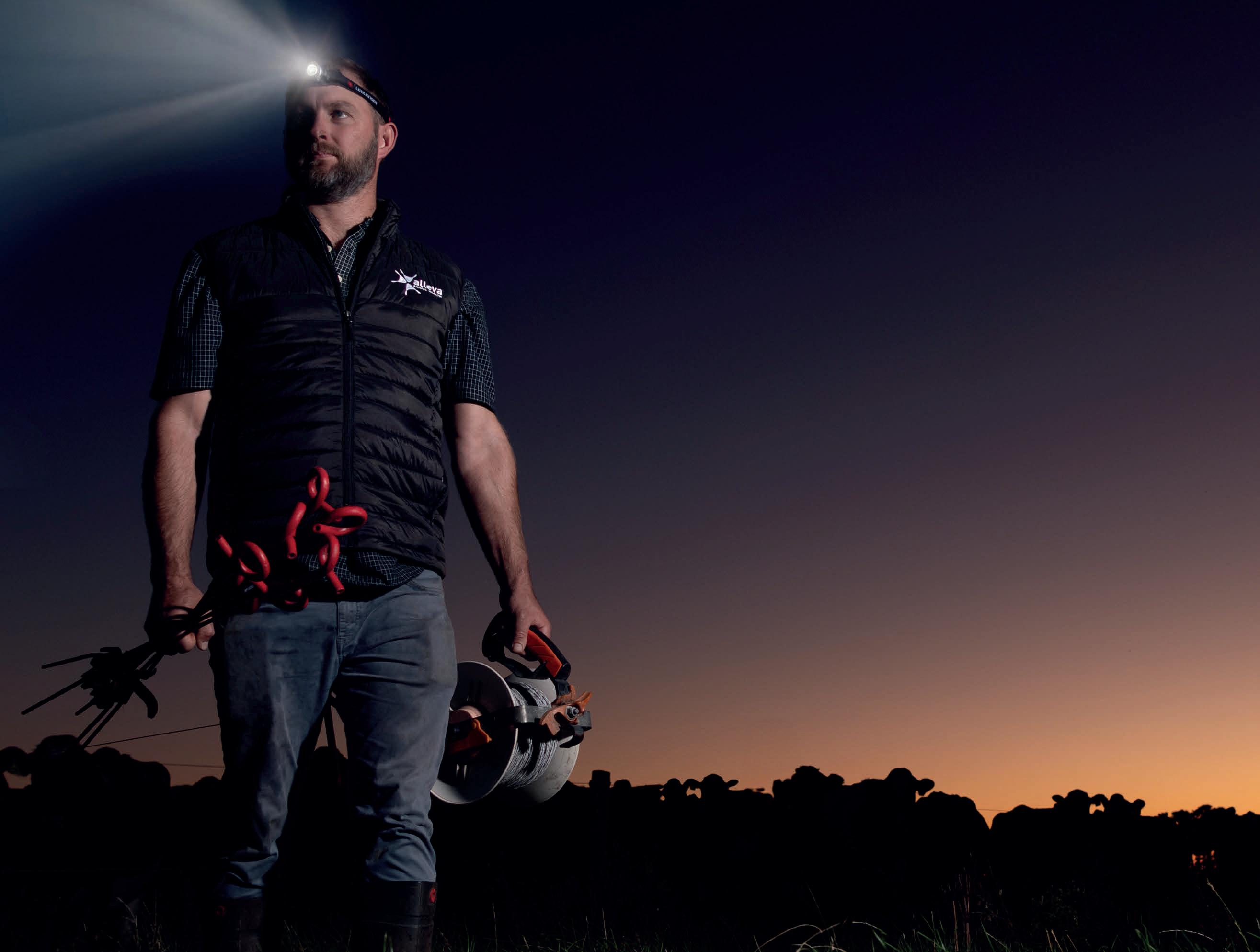
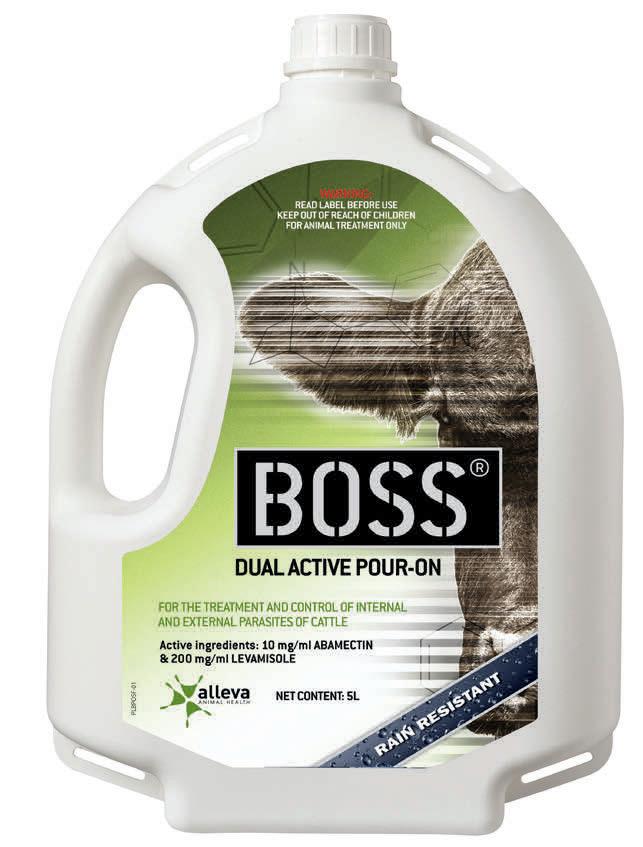
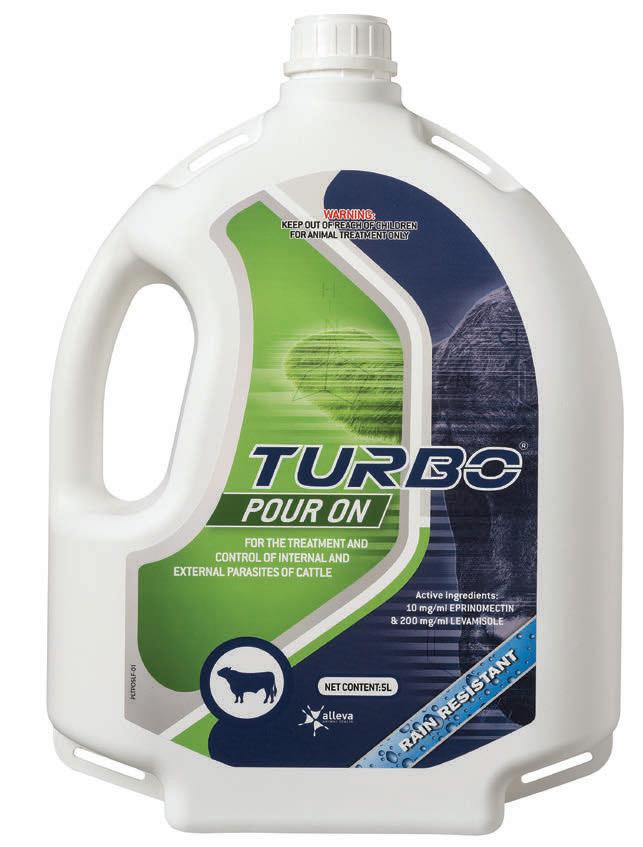
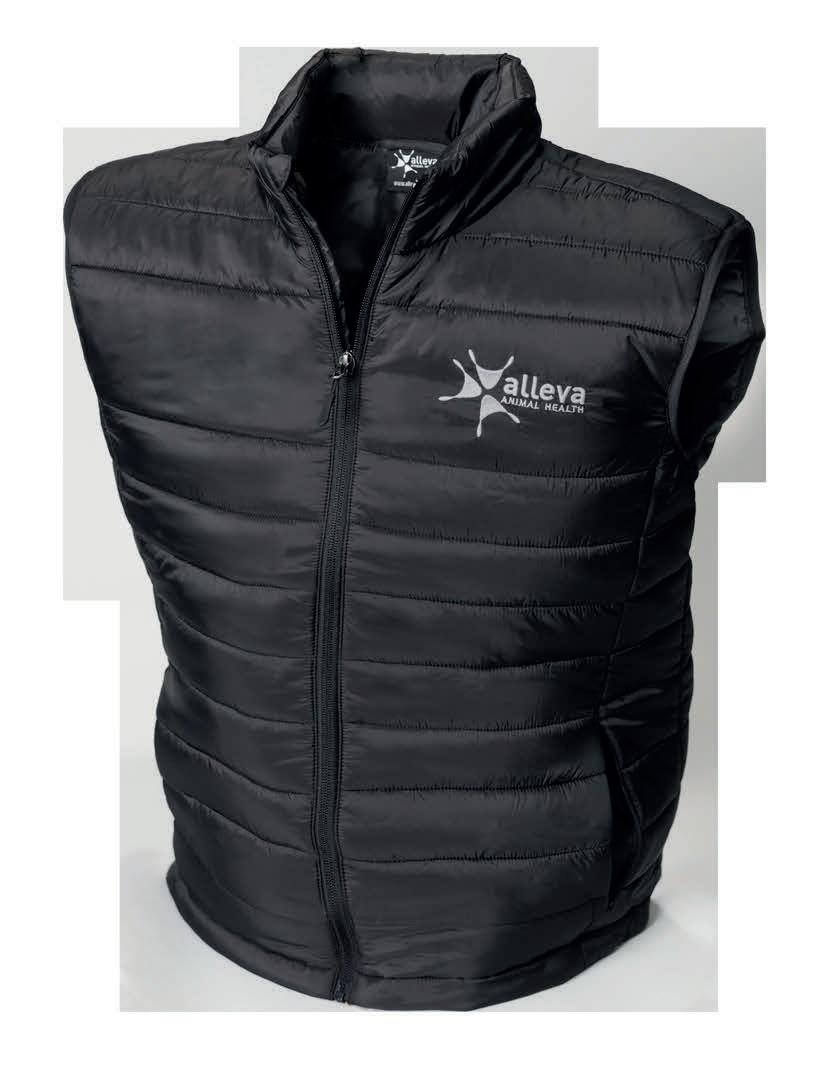
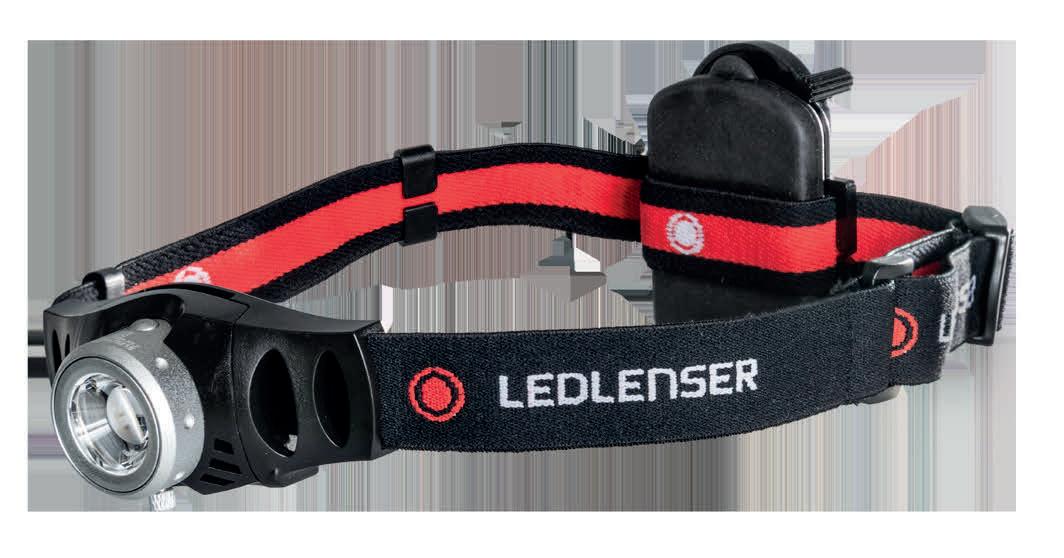
PETER BURKE peterb@ruralnews.co.nz
MOST NEW Zealand
regions are now calving or about to calve and if the good weather continues, the signs point to a good season.
But two regions –Manawatū and the West Coast of the South Island – have had contrasting conditions over the last six months.
Frano Volckman, Federated Farmers dairy chair for the West Coast, says his region has enjoyed a fantastic winter. Volckman runs nearly 900 cows on two farms at Karamea, the northern most part of the region. He says, right along the coast, farms are looking in good nick and everyone is doing pretty good going
into calving.
He describes the weather as being ‘forgiving’ meaning it’s been dry and has allowed farmers to get well set up for calving.
“We have met our covers target and there has also been a huge amount of supplement produced which means that farmers have been able to use some of this and allow pasture to grow. The pastures right across the region are looking very healthy,” he told Dairy News.
Volckman says a few calves are being born, especially around Karamea, and over next week or two, calving will ramp up across the region. Most will start around August 15, he says.
Animal health in the West Coast region is also


Fully Escorted Tours
Tailor-made for the 60 plus traveller
Calgary Stampede & The Rocky Mountains
Jul 5th, 2025, 16 Days
Embark on a 16-day adventure through the heart of Canada's stunning landscapes and vibrant culture. Experience the thrill of the Calgary Stampede - world-class rodeo action and the Chuckwagon event.
Indulge in luxury aboard the Rocky Mountaineer Train from Banff to Vancouver, passing through the majestic Continental Divide. Discover the natural
Bonded for Your Protection

good, according to Volkmann, but he notes that a small number of farmers received false negative tests for M. bovis through the bulk milk testing regime. He says the good news is that these tests came back negative.
“We know that the bulk milk test has such wide parameters and is so sensitive that it can throw a false positive.
NOT THAT far away as the crow flies, Richard McIntyre, Federated Farmers board member and national dairy chair, who farms just north of the Howowhenua township of Levin, has had a very challenging and costly time on his path to calving, which has just begun.
The dry summer and autumn forced him to use an additional 700 bales of baleage and 150 tonnes of maize just to keep his cows in good condition for calving. He says he’s just had to write off the cost of this, because to not do so would have impacted on his pasture covers, calving and milk production.
The weather in the Manawatū region is normally cold and wet at this time of the year, but it seems the conditions have flipped with warm dry conditions prevailing. And the water table has also
That is stressful when the farmer gets the initially result, but thankfully things are okay now,” he says.
Volckman says there also appears to be a
dropped, which is a bonus.
“So, we’ve had a sudden spurt of grass growth over the last month and a half, which has been really very good. Ground conditions are also good and hard and so we are getting very good utilisation and this is a great position to be in going into calving,” he says.
McIntyre says the good weather has seen pastures take off and most farmers have now reached their cover targets for calving. He says the milk flow has been good and there is hope for a good season.
“It’s interesting to note that often within a twelve-month period you’ll grow the same amount of grass, but you don’t always get it at the same time each year, and that’s the reality of the situation,” he says.

reduction in the number of West Coast herds testing positive for TB. This has always been a problem in the region because many of the dairy farms back onto native bush
where the main vector, possums, are found.
“But a lot of work has been done to control possums and eradicate TB and obviously this work is paying off,” he says.
SUDESH KISSUN sudeshk@ruralnews.co.nz
IMMIGRATION NEW Zealand
acknowledges staff shortages facing the dairy sector and says it is prioritising applications for overseas workers.
Immigration New Zealand (INZ) director visa Sarah Clifford says they appreciate that waiting on visa applications to be processed can be stressful.
Clifford says they are also “very aware” of the workforce pressures the dairy sector is currently facing.
“We are engaging with Federated Farmers regarding this situation,” she told Dairy News.
INZ was reacting to criticism from former Federated Farmers immigration spokesman and Waikato farmer Chris Lewis around accredited employer scheme.
He says being an accredited employer with INZ isn’t helping dairy farmers secure visa for overseas workers. The scheme is “almost farcical”.

“Farmers pay to become accredited employers. It’s a timetested process, farmers must have a long history of being good employers and keep good records,” Lewis told Dairy News.
“But it’s still taking us four to five months to get a visa for
overseas workers.”
It also costs employees around $740 per visa application, plus the cost of hiring and lost productivity from being a person down.
Lewis doesn’t think it should take INZ four months to verify documentation.
“With all the money they get for each visa application, they can easily hire extra staff and set up a dedicated team to quickly go through a four-page visa application.”
Clifford points out that changes to the Accredited Employer Work Visa (AEWV) scheme were announced in April 2024. These included introducing an English language requirement for migrants applying for lower skilled roles, and a minimum skills and work experience threshold for most AEWV roles.
It also includes a requirement for employers to advertise for longer and engage with Work and Income before approval to bring in migrants will be granted for low skilled roles, and reducing the period a migrant worker can stay in New Zealand continuously (or maximum continuous stay) for most of these roles from five years to three years.
In May, the Government made a one-off, temporary change to reduce the Job Check advertising requirement for ANZSCO level 5 dairy cattle farm roles. For job
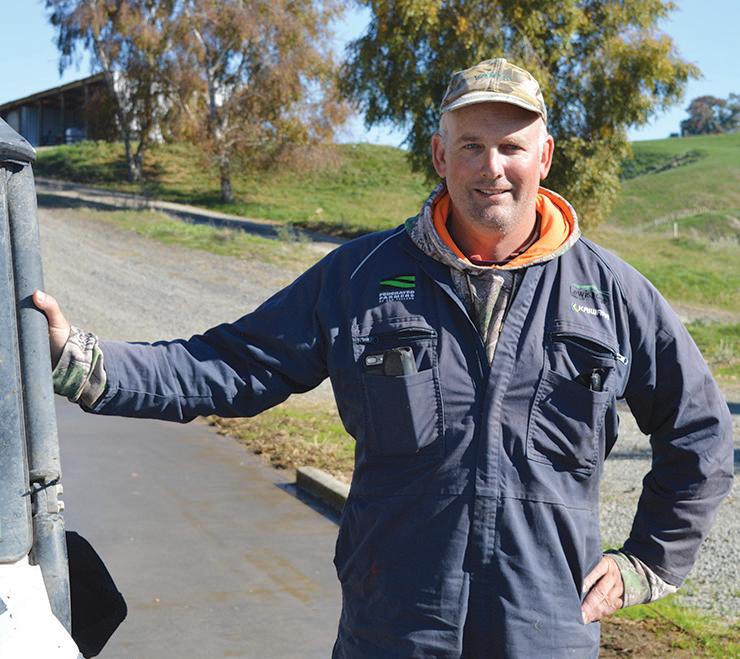
check applications submitted before 14 July 2024, employers only needed to advertise these roles for 14 days nationally, instead of 21 days, and engage with Work and Income.
“Since then, we have prioritised the allocation of Job Check and AEWV applications for dairy workers and will continue to do so until 1 August 2024 at this time,” says Clifford.
Dairy sector applications are currently being managed closely and dedicated staff trained in the dairy sector are processing these applications.
For the period 1 May and 24 July 2024, the average processing time for job checks for the dairy
sector is 16 working days. For AEWV level 1-3 roles, it is 25 working days and for level 4-5 roles it is 35 working days.
Clifford says the processing time of an application depends on various factors such as the completeness of an application, any additional information required, and the level of verification required including third party checks.
“A high number of applications are not being submitted with all the required documents meaning they are taking longer to decide. A checklist has been provided to the dairy sector to help them to submit more complete applications.”
SUDESH KISSUN
SHEEP MILK processor
Spring Sheep says achieving accreditation to export infant formula to the US$17 billion Chinese market is a game changer.
The company received its State Administration for Market Regulation (SAMR) registration from the Chinese Government last month, becoming only the second foreign sheep milk company to do so. The SAMR allows the company to export branded infant formula to China.
Spring Sheep chief executive Nick Hammond says the process to register an infant formula range in China takes a number of years to achieve and requires extensive research, multiple successful trials and validation of a very high-quality production process.
He says the accreditation is a game changer for Spring Sheep as it gives them direct access to the US$17b China infant formula market.
“Up until this point Spring Sheep have only been able to sell our infant formula range through a limited number of online channels which are restricted only to an English label,” he told Dairy News.
“While the brand has performed very well in this narrow channel (often cited as one of the top performers in our category) this registration gives Spring Sheep access to the full market in China.”
Hammond points out that only a very small number of companies have achieved this registration.
“Spring Sheep is only the second foreign sheep milk company to ever get through this
accreditation and the first that exclusively uses New Zealand sheep milk as its main ingredient.”
Following the confirmation of successful registration, the Spring Sheep brand was launched at CBME in Shanghai which is one of the largest mother and baby shows in the world.
Hammond says they’ve had a great response from retailers and distributors.
Production has already begun under the new registration and product will be available in China later this year.
China is the biggest market in the world for infant formula. While the birth rate is expected to be relatively stable in the coming years, there is growth within both sheep/goat and premium infant formula which is where Spring Sheep is positioned.
The company’s main product will be its infant
THE NEW Zealand Dairy Industry Awards has acknowledged the tragic passing of Morrinsville farmer Jeff Bolstad.
In a statement, the NZDIA said Bolstad was a true stalwart of the New Zealand dairy industry and was one of the Awards’ biggest advocates.
He died in a tragic event while milking cows on his farm. Worksafe is investigating the accident.
His daughter Angela said in a Facebook post that her dad died tragically in the cowshed “milking his precious cows”.
“We are all totally broken and cannot yet comprehend this tragedy. People that knew Jeff knew he was so full of life, loved his family, loved people, loved having a chat, loved his dairy farming and he never thought this day would ever come to him. He still had so much to do in life.”
The NZDIA sent its sympathies to his wife Annette, his daughters Angela, Debbie, Janice and Alison and all their families.
“A family man and proud dairy farmer, Jeff was instrumental in developing the Awards and had a deep passion and belief in not only the Awards, but the whole dairy industry,” the NZDIA says.
“He has dedicated much time and

energy to the Awards and was a dedicated volunteer, committee member and judge.”
In 2021, Bolstad was the recipient of the inaugural Lifetime Contribution to NZDIA Award, presented at the national gala dinner in Hamilton. During his acceptance speech, he commented that he was very touched by the recognition. In his words, “You get out what you put in”.
“Publicly, Jeff preferred to remain in the background and used his strengths in forming strong relationships to guide, encourage and mentor up-andcoming farmers,” the NZDIA says.
“A community man, Jeff was also a board trustee and involved in Federated Farmers, community projects and was considered a sounding board and mentor by many. An extremely humble man, Jeff expected no recognition. He was one of a kind and his loss will be felt by many.”
formula range but it also has family products including pure sheep milk powder, growing up milk powder and also a midsenior product range.
The natural digestibility, high quality protein and high calcium levels in New Zealand sheep milk make it a particularly good source of nutrition for several different nutritional products, says Hammond.
As part of its planned entry into China, Spring Sheep has already established a key partnership with Neptunus Foods who are the main distributor of the range in China.
Hammond says Neptunus Foods are part of a large pharmaceutical group in China and have a 17-year track record of successful distribution of imported infant formula and nutritional products.
He adds that Spring Sheep grass-fed milk is perceived as a premium and natural source of nutrition and digestibility.
“The New Zealand source is also a very strong source of credibility as New Zealand is one of the most trusted sources of nutritional products.

“What is unique about Spring Sheep is our Zealandia breed of dairy sheep which makes up all our sheep milking flocks and is exclusive to Spring Sheep. This is the highest performing pasture-based sheep breed in the world and a very special aspect of our story.” Spring Sheep is jointly owned by


Herud’s system.
A CANTERBURY man who has been working for several years to establish what he calls “a more caring, kinder and fairer” dairy system is now up and running in the North Island after establishing a partnership with a Waikato dairy farm.
Glen Herud’s Happy Cow brand has gone through several iterations but now exists as a ‘factory in a box’ pasteurisation and refrigeration plant, supplying Auckland consumers by way of about a dozen collection points dotted around cafes, convenience stores and the like.
The plant is installed on a Te Kauwhata dairy farm where the farmer has devoted a small number of cows from his main herd to supplying
“You can only buy our milk online through our website. And then we drop it off at several collection points about Auckland and people just go and pick up their milk. And then their credit card is charged,” explains Herud.
“We’re not going through retailers or anything like that.”
Herud says it is not just about how the cows and calves are treated but the partner farmers have to be customer-focused.
“A lot of farmers just want to produce the milk and have it taken away.
“When you start selling milk direct you must start producing really good quality milk and whatever Fonterra calls good quality is still not really what we call good quality. There’s a little bit of extra work involved.”
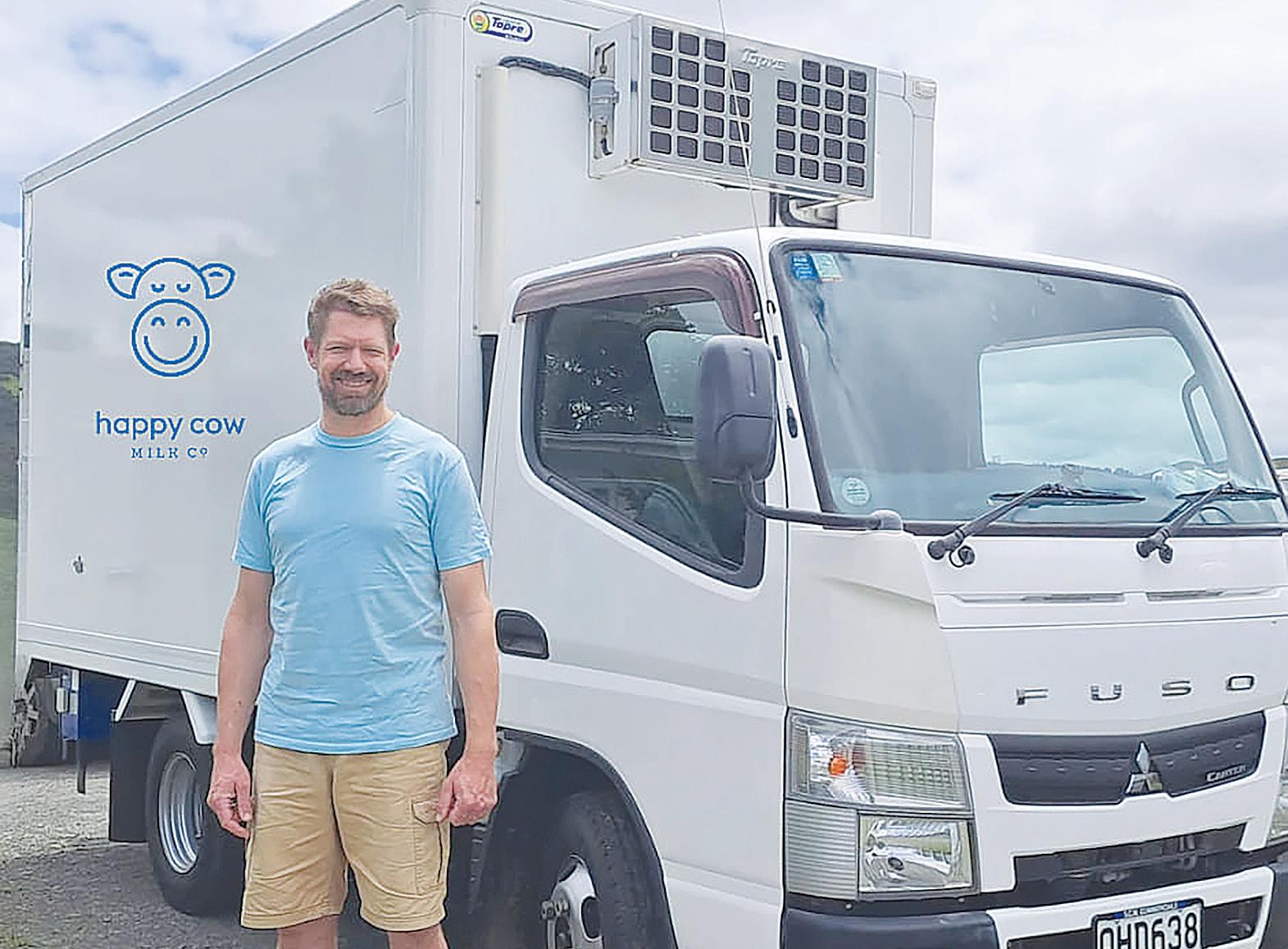
Herud says his partner is a sharemilker who is “pretty onboard with what we are doing”.
“We’ll take more and more as we grow but we’ll probably only ever take 50% of their milk.”
Herud first featured in the pages of Dairy News in 2016 when he was milking his own small
herd near Christchurch using a 15-metre custom trailer housing a milking machine, pasteur-
iser and bottling plant, and serving a small customer base including cafes and supermarkets. He also won an environmental award for the way the mobile plant could be taken to where the cows graze, to minimise pugging.
His philosophy also includes animal welfare priorities such as leaving calves with their mothers to wean naturally. By 2018, however, he had to concede that it was too expensive to operate at small scale and moved to develop his factory-in-a-box model for installation on partner farms.
Herud says he is now building an improved second prototype and hoping to find a Canterbury partner farm.
“We will be back down to Christchurch shortly. That’s the plan.”

PETER BURKE
peterb@ruralnews.co.nz
MINISTRY FOR Primary
Industries director
general Ray Smith remains optimistic about the long-term future of the dairy industry.
Smith told Dairy News that the sector is on the road to recovery, but warns that it could be another 18 months before it gets back to a position which looks like normal.
The big imponderable in the recovery is what happens in China. There are reports its milk production is increasing, albeit at a lower rate now than a year ago, and that there has been a decline in NZ exports there, which is expected to continue in
the coming year. He also points out there will continue to be more competition in the markets.
“But remember, its
middle class is still rising and so I think what we will see in countries like China where this is happening, is an increasing demand for
RAY SMITH says MPI has re-organised their part of the business which deals with market access and FTA’s. While MFAT plays the lead role in these, MPI provides much of the backroom data and technical information which back up such negotiations.
Clearly the spotlight is on India and Smith says MPI has been very active in building up the relationship with that country.
“We have had their National Dairy Development Board over here and that went incredibly well. We have been speaking at dairy related conferences in India. We think of India as a big and potential market where there are challenges and we are
FARM TECHNOLOGY solutions provider DTS has released the latest version of its drafting and herd management app, Herd-Man.
Created for users of DTS’ drafting solution, Auto Drafter, this update marks a significant milestone for the company.
It says over the past decade the Herd-Man app has been a trusted companion for dairy farmers and this new release incorporates the feedback from its farmer customers.
DTS chief executive Gavin Thwaites says the release is just the beginning of its revised digital roadmap.
“Our dedicated team of programmers will regularly enhance the HerdMan app based on farmer feedback,” he says.
“We welcome farmer input and aim to create a seamless experience for our users.”
Thwaites revealed that the next stage of updates is already planned, aligning with the feedback from farmers, and driven by a desire to create cost-effective and collaborative solutions on farm.
“We strongly believe in collaboration within the dairy industry,” says Thwaites.
“Rather than reinventing existing solutions, our philosophy is simple: let’s work together to maximise value for our customers. That’s why our Auto-Drafter integrates with leading cow wearables and herd management platforms. These
protein. So, NZ has got a place in there and our dairy industry has got a range of products that it supplies into the market.
“And don’t forget, the
looking at what we can offer them in a potential deal,” he says
According to Smith, one option is to build relationships by helping them increase the productivity of their industry. He says NZ has a lot of know-how which could be of benefit to India.
The other reason for the reorganisation of the ‘market access and trade areas’ of MPI, says Smith, is to put more effort into helping farmers and others in the primary sector to get the maximum benefit out of existing FTA’s and other trade agreements. He says such agreements are complex and the goal is to set out in simple terms the potential benefits.


solutions enhance the capabilities of our cow drafting technology.”
Thwaites points out that farmers should not have to change their gate when they invest in new cow monitoring technology.
It’s about “just having one drafting solution that works with all of them”.
“Take Active Tag, for example. We’ve started selling Active Tag because farmers can own it outright, with no per cow subscription.
“Farmers get all the heat and health monitoring features bundled into one product. It represents good value for farmers and integrates seamlessly with Auto Drafter.”
DTS says it invites other farm technology developers to collaborate with them and is in advanced discussions with some larger co-ops “but the ink isn’t on the paper yet”.

But Smith says the positive side is that this spell of good weather was never predicted, so one can only hope.
NZ dairy sector has access to around 160 markets and it’s quite good at moving the product around to get the best value they can,” he says. At present, NZ is enjoying a mild winter which has helped regions like the Manawatū get back on their feet after an awful late summer and autumn. Again, an imponderable for the dairy industry is a prediction from NIWA that we may get another El Nino system later this year.





ACCORDING TO Statistics NZ, the country’s greenhouse gas emissions fell 2.7% in the March quarter, the largest quarterly decrease since March 2010 “excluding the pandemic years”.
The decrease, said Stats NZ, was mainly due to lower agriculture, forestry and fishing emissions. Emissions from this sector were down 8.1% from their peak in March 2019, and currently at their lowest level since Stats NZ’s emission series began.
The drop came at the same time as a 7.7% increase from the electricity, gas, water and waste services industry, “due to an increase in natural gas used for electricity”.
Don’t hold your breath waiting for the Greens or Greenpeace to give farmers a pat on the back though – it just doesn’t suit their anti-farming narrative.
meat
THE OLYMPICS Games underway in Paris has been touted as the most ecofriendly event to date. But to the organisers’ dismay, the athletes aren’t buying the carbon footprint and veganfirst mentality.
According to an article in the Daily Telegraph, Paris had a charter that said 60% of food in the village had to be vegan friendly & the day before the opening ceremony they ran out of meat and dairy options because they hadn’t anticipated so many athletes choosing the meat and dairy options over the veganfriendly ones.
The caterers were forced to bring in more eggs, meat and dairy products because not too many of the world’s top athletes were touching the vegan diets.
A DEBATE is brewing in Australia about the ethics of breeding smaller-than-normal animals.
Miniature highland cows are popular with the public in Australia but cattle societies and vets are questioning the ethics of breeding smaller-thannormal animals. A miniature highland cow is classified by its size — which is anything less than the standard size of 1.06 metres.
Most “minis” carry a gene linked to a growth disorder known as chondrodysplasia, which can cause dwarfism.
According to Professor Imke Tammen, from the Sydney School of Veterinary Science, the gene can be lethal if both the sire and the dam (mother cow) carry it.
The Veterinary Institute of Animal Ethics says breeding miniature animals prioritises looks over quality of life.
A HAMILTON dairy company has been found guilty of making false and/or misleading representations as to the place of origin of the dairy ingredients used in some of its ghee products.
The charges filed under the Fair Trading Act arise from Milkio Food Ltd’s use of the FernMark fern logo and licence number (FernMark Logo) in circumstances where FernMark had not licensed the use of the logo on the products in question (Buffalo ghee), or had done so on the basis of untrue information being supplied by Milkio (cow ghee).
The Commerce Commission says Milkio has pleaded guilty to 15 charges and will be sentenced this month.
FEDERATED FARMERS’ latest Farm Confidence survey brings little comfort to the farming sector.
The survey of 1400 dairy, sheep, beef and arable farmers shows confidence remains stuck in historically low territory.
Farmers have been facing challenging times in recent years – trying hard to earn a living amid high interest rates, low commodity prices and sky-high input costs.
The last term of the Labour Government brought no respite, as an avalanche of regulations was dropped on them from winter grazing to pricing methane emissions.
The Coalition Government provided some relief by unwinding some of Labour’s unfair regulations – like repealing some draconian aspects of winter grazing regulations and promising to keep agriculture out of an emissions trading scheme for the time being.
So, it’s incredibly frustrating to see farmer confidence still sitting at these stubbornly low levels.
The Government have done a lot of work repealing and rewriting some of the most unworkable regulations, but there’s still so much more to be done. But the six-monthly survey clearly shows it’s not only regulation that’s eroding farmer confidence.
There are a whole range of other issues that are also having an impact – including concerns about banking, high interest rates, soft farm-gate prices, the ability to find staff, and the general economic outlook for the country.
The survey also paints a bleak picture of what’s happening with farm profitabilityjust over a third of farmers are making a loss right now, while only 27% say they’re making a profit and 39% breaking even. If that’s not bad enough, more than half of farmers expect their profitability to decline over the next 12 months.
Feds want to see farmers thriving and feeling confident, not lying in bed stressing about how to pay their bills and keep the lights on. Because they know that when farmers lose confidence, they cut their spending and shave costs from their business, and that has major flow-on effects for the wider economy.
Head Office: Lower Ground Floor, 29 Northcroft St, Takapuna, Auckland 0622
Phone 09-307 0399.
Postal Address: PO Box 331100, Takapuna, Auckland 0740 Published by: Rural News Group Printed by: Inkwise NZ Ltd
Contacts: Editorial: sudeshk@ruralnews.co.nz
material: davef@ruralnews.co.nz Rural News on-line: www.ruralnews.co.nz
Subscriptions: subsrndn@ruralnews.co.nz
Publisher: Brian Hight Ph 09-307 0399
General Manager: Adam Fricker Ph 021-842 226
Editor: Sudesh Kissun Ph 021-963 177
Machinery
Editor: Mark Daniel Ph 021-906 723
markd@ruralnews.co.nz
Reporters: Peter Burke Ph 021-224 2184 peterb@ruralnews.co.nz
Subscriptions: Julie Beech Ph 021-190 3144
Production: Dave Ferguson Ph 027-272 5372
Becky Williams Ph 021-100 4831
Digital Strategist: Jessica Marshall Ph 021 0232 6446
AUCKLAND SALES CONTACT: Stephen Pollard Ph 021-963 166 stephenp@ruralnews.co.nz
WAIKATO & WELLINGTON SALES CONTACT: Lisa Wise Ph 027-369 9218 lisaw@ruralnews.co.nz
SOUTH ISLAND SALES REPRESENTATIVE: Kaye Sutherland Ph 021-221 1994 kayes@ruralnews.co.nz
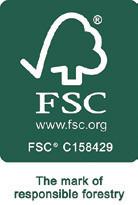
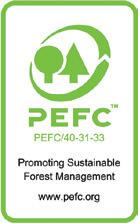
OVER THE past 12 months I have noticed a growing emphasis on the dairy industry’s greenhouse gas (GHG) emissions reduction targets and how these impact farmers.
It becomes resoundingly clear that the market is steering the industry towards embracing sustainable practices, signalling a pivotal moment for dairy producers and stakeholders to adapt and thrive.
This is a polarising topic, but to understand more my colleague Matt Dalley and I were privileged to recently host Charlotte Rutherford and Malcolm Ellis on our “Feed for Thought” podcast. Charlotte is Fonterra’s director of sustainability and Malcolm is a strategic advisor, whose role is focused on how farmers can deliver emissions intensity reductions on farm.

Charlotte shed light on the pivotal role sustainability continues to have on the demand for NZ dairy products, evolving from primarily effluent compliance to encompassing a broader spectrum of environmental considerations. “This evolution is testament to the integral role that sustainability now plays in Fonterra’s overall strategy,” she said. Market driven demand for sustainably produced dairy products is outpacing traditional environmental compliance.
Charlotte pointed out that customers and financial markets are driving the push towards sustainable practices, and the industry, including Fonterra and its farmer owners, is aligning with these market trends.
Malcolm’s role centres around providing farmers with actionable strategies they can apply to achieve the industry’s emission
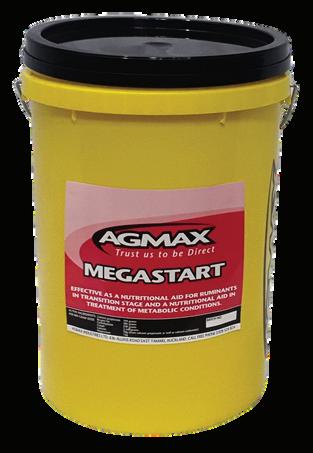

reduction targets. As an example, improving reproductive performance and using this to drive herd performance and feed conversion efficiency can have a significant impact on lowering GHG emissions intensity.
Malcolm highlighted that farmers have been focused on achieving efficiency gains for generations, but the reason why has never been stronger than it is today. As a fourthgeneration farmer
himself, Malcolm believes having options to achieve emissions targets beyond just reducing stocking rate is critical to the future success of the dairy industry.
Both Charlotte and Malcolm addressed the industry’s commitment to meeting the increasing market demands for sustainable dairy products and the importance of embracing sustainable practices at the grassroots level.
Charlotte’s
perspective underscored the strategic importance of acknowledging and meeting the market demands for sustainability, as evidenced by Fonterra’s recent climate roadmap and Scope Three targets. These initiatives demonstrate the industry’s proactive response to the evolving market landscape and the commitment to addressing climaterelated challenges.
Malcolm’s insights
into practical strategies to drive on farm efficiency gains provide optimism that farmers can continue to drive productivity gains and reduce emission intensity.
Listening to Charlotte and Malcolm it becomes resoundingly clear that the market is steering the industry towards embracing sustainable practices, signalling a pivotal moment for dairy producers and stakeholders to adapt and thrive. The conversation
with Charlotte and Malcolm serves as a compelling call to action for the industry to proactively align with the market’s increasing demand for sustainable dairy products.
To listen to the full conversation with Charlotte and Malcolm, search Feed for Thought on all major podcast platforms.
• Wade Bell is Genetic Technologies farm systems manager. Contact him at wbell@genetic.co.nz.


THE LAST thing most Jersey members would expect to read in the Jersey Focus is an article about the well-known Holstein-Friesian and Ayrshire breeders Gary and Karen Peters of the Rock View stud, Midhirst, Taranaki.
But 12 months ago, Gary and Karen found themselves needing cows in a hurry and put together a herd with many Jerseys for the season. Then word got around the grapevine –this herd was a success and the Peters were breed converts.
The 2022-23 season was a tough one. With the farm on the market,
it was signed up several times through the season, but each sale fell through. As the end of the season neared, the farm was signed up for sale again and this time they thought it was a done deal.
So much so that the dispersal auction was booked and the catalogue went out. Then just two days before the dispersal, once again the farm sale fell through. The dispersal proceeded, the cows were sold and most trucked out immediately following the sale.
That left Gary and Karen in a bind – they needed in-milk cows quickly if they wanted
GARY PETERS readily admits that what surprised him the most about the Jerseys was their potential for production. Where he hadn’t been keen on the breed prior because he just didn’t think they had the production, he has happily been proven wrong. They have production in spades, a great temperament, and to top it all off, Karen thinks they are the cutest cows.
The new ‘thrown-together’ herd for the 202-/24 season totalled 120 cows, the same number that they had milked in the 2022-23 season. The farm had stayed on the market, and finally sold again early in the season just as they finished calving, going unconditional quite quickly to very keen purchasers. With the herd dispersed again in April 2024, they do not have a complete season’s production to compare against the previous herd but confirm that the herd produced an average of 600 kgMS by the date of the dispersal sale. Gary says, “They didn’t let us down, we were super impressed”.
On 1 June, Gary and Karen will leave their 42ha farm on Denbigh Rd, just south of Stratford where they have farmed for the past 15 years. They are moving just 2km up the same road to what has been

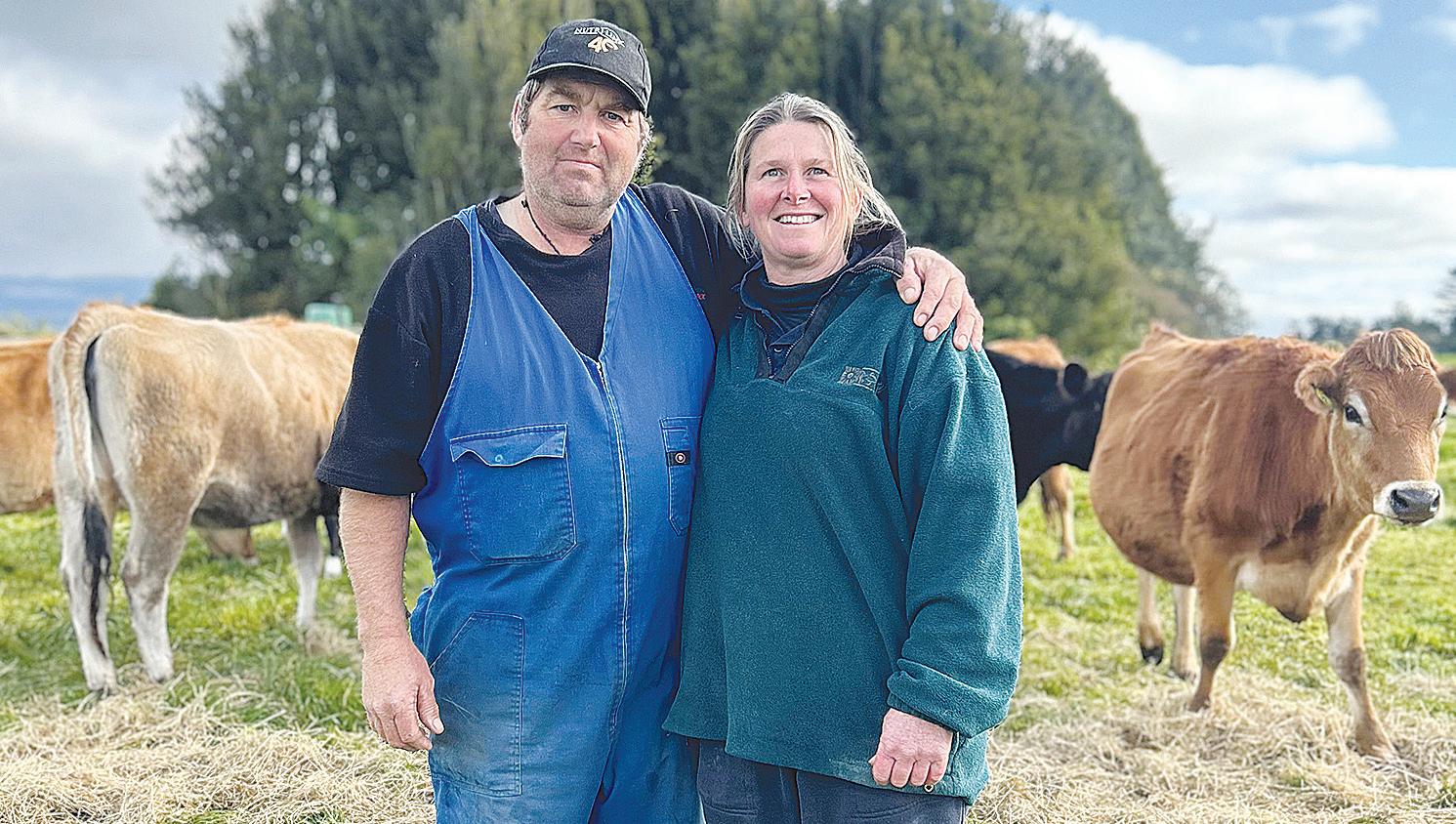
to keep supplying for the current season. They purchased some empty
their runoff, a slightly larger property further up the mountain.
It is time to take life a bit easier and rear a few calves and run some beef. The replacement calves have been retained to be sold later and there are already beef calves up there. With a small 16 bale rotary on site, Gary will milk about 20 cows to rear the calves, considering once-a-day milking. Gary will also maintain the AB run that he has had for several years.
A house has been moved onto the new property, although it is not quite ready for them yet. Held up by the council for about 12 months, once approval was received, the house was moved onto the land within two weeks and then the real work started to get it ready for them.
The new house is situated in the middle of the runoff and will run off solar power and a windmill. There is also a small backup generator, and they will add another battery so there will always be power available. Their new view is even closer to Mt Taranaki, with views also out over the local region to the mountains of the central plateau.
Gary and Karen’s two children Julia and Jacob will also join them at the new property. Daughter Julia (now 21) is a large part of the reason

cows from friends, and quickly changed from Fonterra to Open
their operation has always been kept small. Julia has cystic fibrosis, and this has meant numerous hospital stays over her lifetime. However the recent approval of the drug Trikafta has been a real life-changer for Julia, now able to maintain a part time job at a local café. Jacob has recently completed study in digital design in Tauranga, returning home to help out on the farm and with the move recently.
He intends to build a tiny home on the new property and start setting up his own business.
The farm they are leaving was also originally their runoff when they were sharemilking. They added the neighbouring property, reinstating it to what had originally been one farm, and putting on the dairy shed when they came here 15 years ago. They never really planned on leaving this farm, and prided themselves on staying ahead of many of the compliance issues well before they became mandatory. However, in recent years they have found it more and more frustrating with all the requirements of the dairy industry, that seem to be added to each season. They have decided it’s time for a change, looking forward to a slower pace of life without the tie to yearround milking.

Country for what they were sure would be their final season supplying. With the handful of cows that they had kept back from the sale, they were able to milk through the winter with the empty cows they bought in.
Then their attention turned to spring. Gary was talking to friends in northern Taranaki, Robert and Libbie Taylor, who were also getting out of milking and headed up there to check out the cows on offer. They milked a mix of HolsteinFriesian, crossbred and Jersey.
Initially Gary had no intention of even looking at the Jerseys, but quickly changed his mind when he saw the big, capacious Jerseys, all from the Leithlea herd of Tony and Maureen Luckin, or progeny of Leithlea cows.
Always a believer in the value of pedigree, Gary and Karen joined JerseyNZ as new members and registered their Rock View stud name as a new Jersey stud. The spring-born Jersey calves were all registered, and the Jersey cows were also TOP
inspected. While Gary knew this would not be a permanent herd, he was determined not to waste any opportunity.
The spring calving period was almost perfect, with no calving issues.
They didn’t get a lot of heifer calves though as beef had been used over the later calving cows from earlier than he would have done for Midhirst.
There were no issues either with the herd gelling together right from the start.
All adapted well to the shed and the heifers with their good temperament have impressed the couple. So much so that they were thrilled with the herd that was thrown together to only milk for a season, and became attached to the cows very quickly, especially a couple of the character cows!
They have been swayed to Jersey, and even intend to purchase more to feed calves at their new place this coming season.
• Article supplied by Jersey NZ
GARY AND Karen plan to develop the new property, taking some time to reassess their priorities before embarking on any new ventures, not making any major decisions until their first season on the new property is complete.
Gary and Karen have always had HolsteinFriesians. They started their farming career with the breed, have really enjoyed them and love the breed. Longterm members of both Holstein Friesian New Zealand and Ayrshire New Zealand, they saw their membership in JerseyNZ as a natural extension.
Breed Society membership adds value to their farming operation, and even on the smaller scale, they still intend to register calves, even if they are not supplying milk. They recognise that these calves may still be sold and provide a starting point for a new breeder’s plan. A friend has purchased several Jersey calves from them, and is taking advice on their breeding from Gary and is keen to use Jersey genetics.
Gary and Karen have always registered and classified; and always completed 5-6 herd tests annually. They have also been involved in local Holstein-Friesian and Ayrshire clubs. Long-term, they have bred for balanced cows with good udders and longevity.
The last word will be left to Gary on his Jerseys, admitting that if he had known they could be this good, he would have used the breed much earlier.



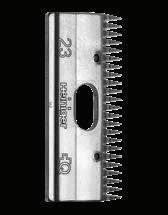


DIANNA MALCOLM
GENOMIC TESTING company, STgenetics (STg) is a relatively new player in New Zealand – but claims it has made the single biggest contribution to dairy breeding since artificial insemination – with an ongoing greater purpose few understand.
STg was born in Texas when two self-made businessmen and friends, Juan Moreno (originally from Columbia) and Maurice Rosenstein (who has since retired) shifted sexsorted semen from an expensive novelty into an affordable industry staple. Judiciously – for their business – they patented the technology.
The two disruptive marketers started with two sex-sorting machines working around the clock. Today, STg has around 1000 machines operating in 50 laboratories across the globe. It employs 1800 people. Approximately 23 of them hold PhDs.
Its team includes a Kiwi – Dr John Sharpe (based in Hamilton), who is a director at STg New Zealand, and the executive vice president of Flow Cytometry at STgenetics USA and Cytonome (which makes the sex-sorting machines and conducts medical research from its Boston base).
STg – whose bull team became available to New Zealand farmers in 2018 – remains proudly underpinned by science, but no-one should underestimate the power of the genetics within its bull team, and the reach of 33 staff spread across both
islands in sales, laboratory work, and research.
From its global standing start in 2004, STg now have nine of the top 25 Total Performance Index (TPI) bulls in the April 2024 sire summaries (including the No.1 TPI sire in the world – Captain). Captain was the No.1 Genomic Total Performance Index (GTPI) sire in 2019, and he has held No.1 proven TPI sire for five successive proof runs. He is also No.1 in Canada and the UK, and he joins other household STg sire names, Delta-Lambda, Rubicon, Delta, Chief,
AT THE heart of every STg conversation is the future.
“We have developed technologies for today’s farms with a serious view for tomorrow’s operations,” Dr Sharpe said.
“Be they environmental, productivity-based, animal welfare (bobby calves), genetic improvement, beef on dairy, or susceptibility to disease. We’re on the journey with our customers. We are leveraging all the technology developed at STg globally, and we’ve refined it for New Zealand.”
Part of those future-focussed efforts includes clinical trials in Japan and the United States using STg’s machines to work towards a cure for Parkinson’s Disease in people.
“That equipment comes out of our house – and, to potentially cure a disease that (to date) has no cure. That is a great thing to be part of,” Dr Sharpe said.
Johnboy, and Charl.
“It’s like the Olympics,” Sharpe says. “You’ve got all these countries and suddenly some countries start winning all the gold medals. That’s what we’ve done.”
STg also runs a large heifer-breeding programme in Ohio. That is where it initiated EcoFeed – a finalist for Innovation in Climate Action for the 2024 International Dairy Federation (IDF) Dairy Innovation Awards.
EcoFeed focusses on identifying animals that have superior feed conversion efficiency and reduced methane production – allowing farmers to improve their profitability sustainably. It is the biggest evidencebased Feed Conversion index in the world.
Loosely summarised, it identifies the genetic markers that lead to identifying the genetics in animals that consume 15% less feed, drink 21% less water, emit 15% less methane, save up to $275,000 in feed costs, and reduce kg CO2e* by 449,000.
STg’s purchase of Genetic Visions Inc. (GV) in 2016 allowed it to diversify its product and service offerings –including accurate testing for the polled and Red & White Holstein gene. GV-ST now includes that polled, Red & White, and A2/A2 gene information in all its evaluations.
STg confirms that customers using STg sex-sorted genetics are now achieving results which run alongside the results of conventional semen (relevant to product management) at 92-95% accuracy.
Important points of difference
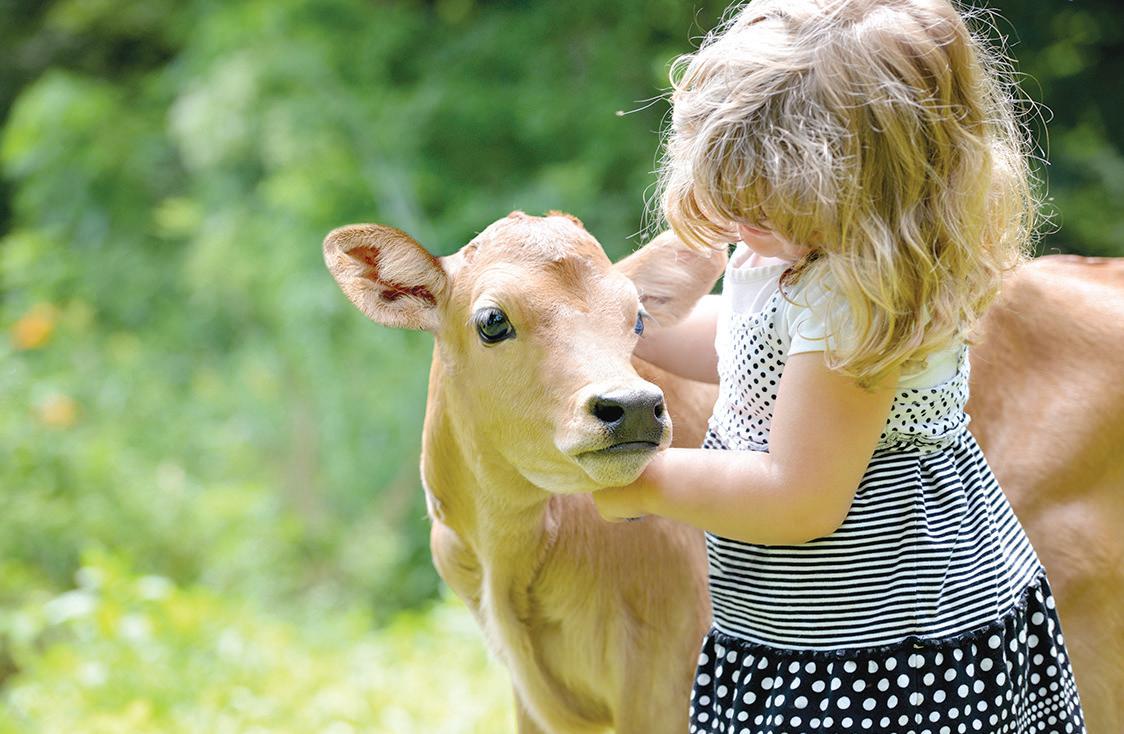
STgenetics delivers sustainable solutions aimed squarely at the next generation.
include that STg semen also uses an exclusive extender (which protects and lengthens the semen’s life), and it safely removes dead cells in a proprietary-protected procedure.
Sharpe – a self-described “positive activist” who has worked in this space his entire career puts STg’s rapid progress into perspective.
“Honestly, the UltraPlus semen is as good or better than conventional
STG NEW Zealand’s director of finance and operations Judy Hope says New Zealand dairy producers can count on measurable and transparent results coming out of STg on every level.
“We use science as the foundation for high-class genetics and sustainable agriculture,” Judy said.
“That’s why we always say we’re about sexed semen, and so much
semen, because all those dead cells are sorted out as well. A standard straw of semen has 15-million cells of semen in it, we’re now matching it on conception with four million cells in the UltraPlus semen.
“We’re doing something special and it’s not just the potency of the sperm cells it is the formulation as well. The semen must be happier in their environment.”
more. Because it’s true.”
Sharpe has the final say: “I don’t think we have to advertise that we now have a phenomenal percentage of the top-100 bulls in the United States. Ten years ago, we had none.
“This company didn’t start big. It was started by two men with a big dream.
“But it is big now.”


ANNE BOSWELL
TARANAKI DAIRY
farmer and Holstein
Friesian breeder
Wayne Taylor has been recognised for his contribution to the Holstein Friesian breed with a Holstein Friesian
NZ Honorary Life Membership Award.
The award recognises an HFNZ member who has given outstanding contribution to the association and the breed. It is only available for up to 20 living members of HFNZ at any time.
HFNZ Patron Denis Aitken said Taylor epitomised passion for the Holstein Friesian
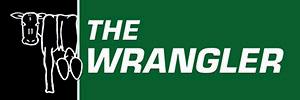
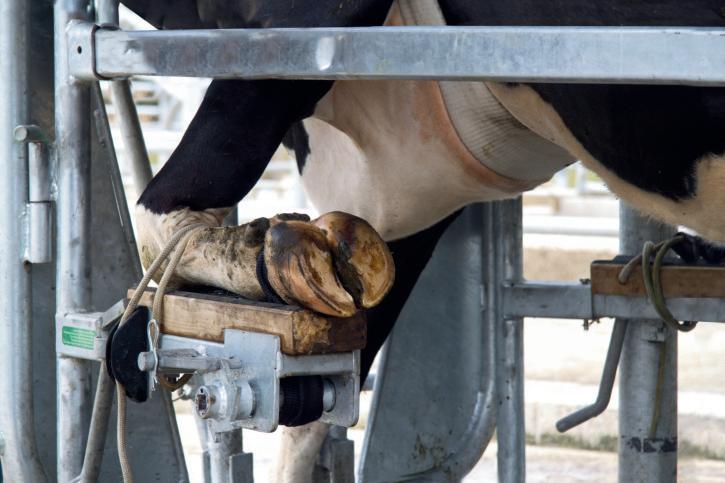
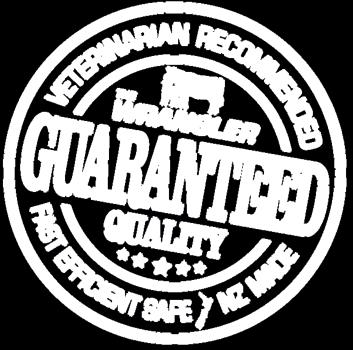
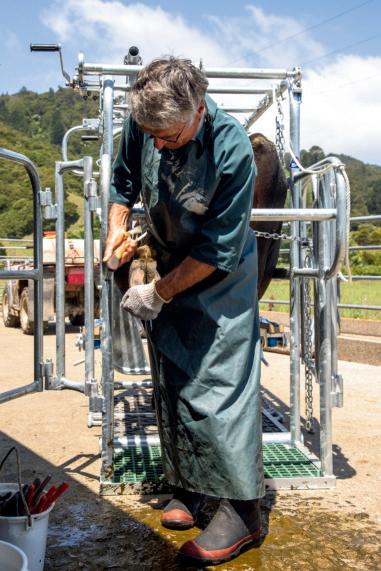

breed.
“Wayne is someone who has put the Holstein Friesian breed at the front and centre of his life,” Aitken says.
Taylor, who milks 190 cows on 68ha effective at Waitara with wife Leeanne under the stud name Muritai Holsteins, became a member of Holstein Friesian NZ in 1985 when he purchased his first Holstein Friesian cow. He registered his first Holstein Friesian cow with the Association in 1986.
The purchase of a brood cow saw the development of Muritai Holsteins’ well-known ‘W’ family.
“I don’t think there is any other cow family in the country that has produced as many bulls that have gone into a sire proving programme,” says Taylor.

Today, the ‘W’ family makes up over 70% of the Muritai herd.
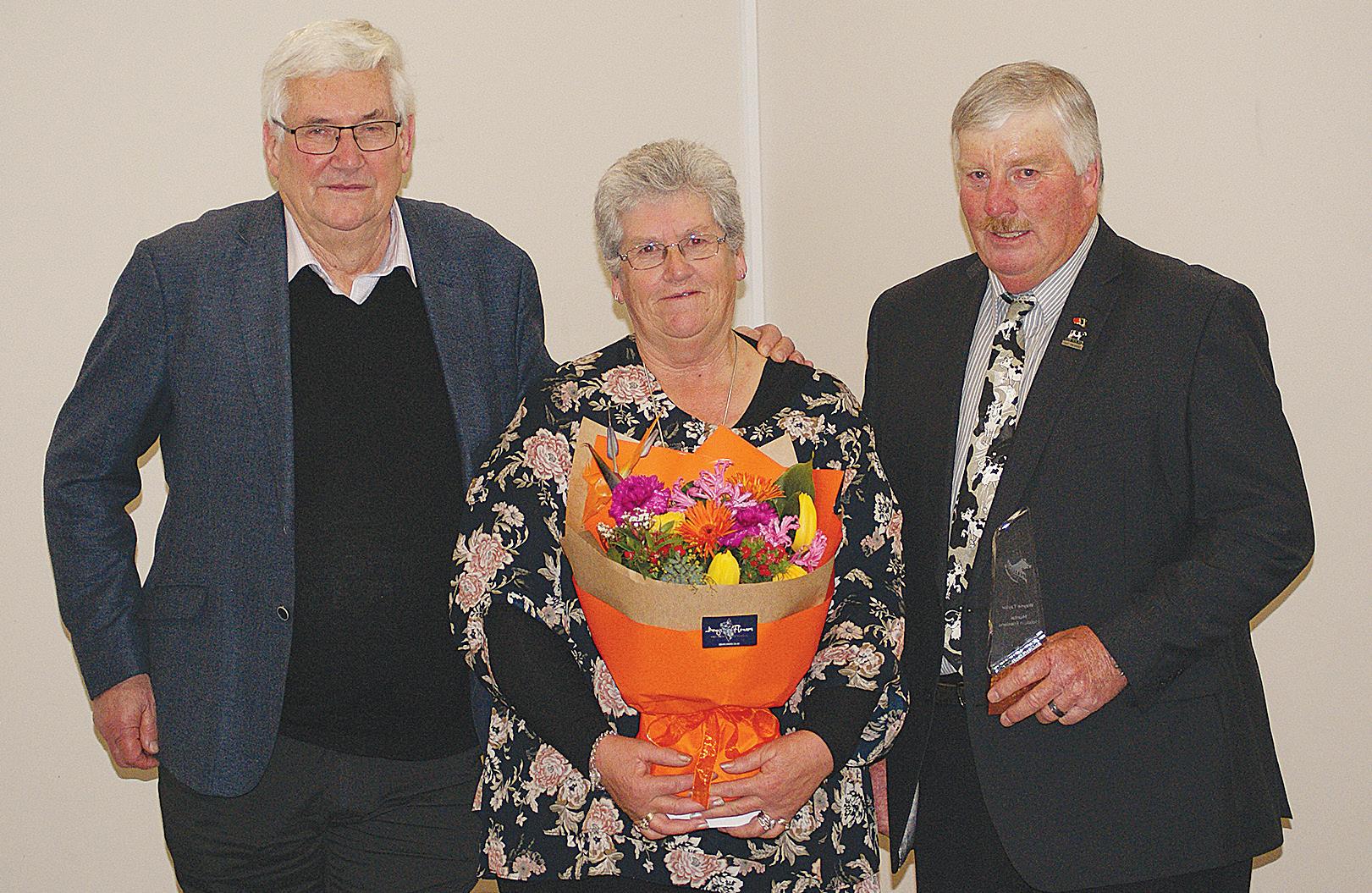
WAYNE TAYLOR says it was a tremendous honour to receive an Honorary Lifetime Membership.
“I wouldn’t have been able to stick it out and do the job without the support of my family – in particular my sons Jamie and Dwayne, my grandchildren, and Leeanne, who is the constant behind it all,” he said.

Taylor has held a variety of roles within HFNZ. Not only has he helped develop the Taranaki branch of the Association – both as president, and the man behind the popular annual Taranaki Branch Sale – but became a junior judge in 1992, and senior judge in 2005. In 2011 he became overjudge of the
“Without Leeanne’s support at home, keeping the place ticking over, I wouldn’t have been able to achieve the things I have; in 21 years, I’ve only missed one board meeting. I’m truly grateful for her support.
“I’d also like to acknowledge former HFNZ President Graham Johnson, who first encouraged me to put my name forward for the board.”
Taylor says it was satisfying to see two HFNZ board directors, Annabelle Scherer and Bradley Parkes, move through the ranks into the leadership roles, having been attendees of the Youth Camps they ran in the past.
“We have made some wonderful friendships with people from around the country who share the same passion,” Taylor says.
“The 21 years have slid by… it has been a passion, and a pleasure.”
Holstein Friesian NZ Judging School, a role he has occupied numerous times over the years.
He joined the HFNZ Board in 2002 and after a hiatus in 2003, went straight back on in 2004 – resulting in over 20 years of service.
Taylor was also a TOP Inspector from 2003-2012, President of HFNZ from 2010-2012, and chaired both the Sire Proving, Discovery Project and Black & White Youth committees at various times.
But what has arguably been Taylor’s most valuable contribution is the positive impact he has had on young people in the industry.
“Wayne and Leeanne took many youngsters under their wing, and to this day they are still mentors to many young people,” Aitken says.
“The Association has gained strength from the work Wayne has done with young people over the years; he was the ‘OG’ of HFNZ Black & White Youth and is responsible for raising it to the level it is today.
“He achieved all this, while often still running the farm at home.
“Wayne has been a truly dedicated servant to the Holstein Friesian breed, and an Honorary Lifetime Membership is a small reward for that dedication.”

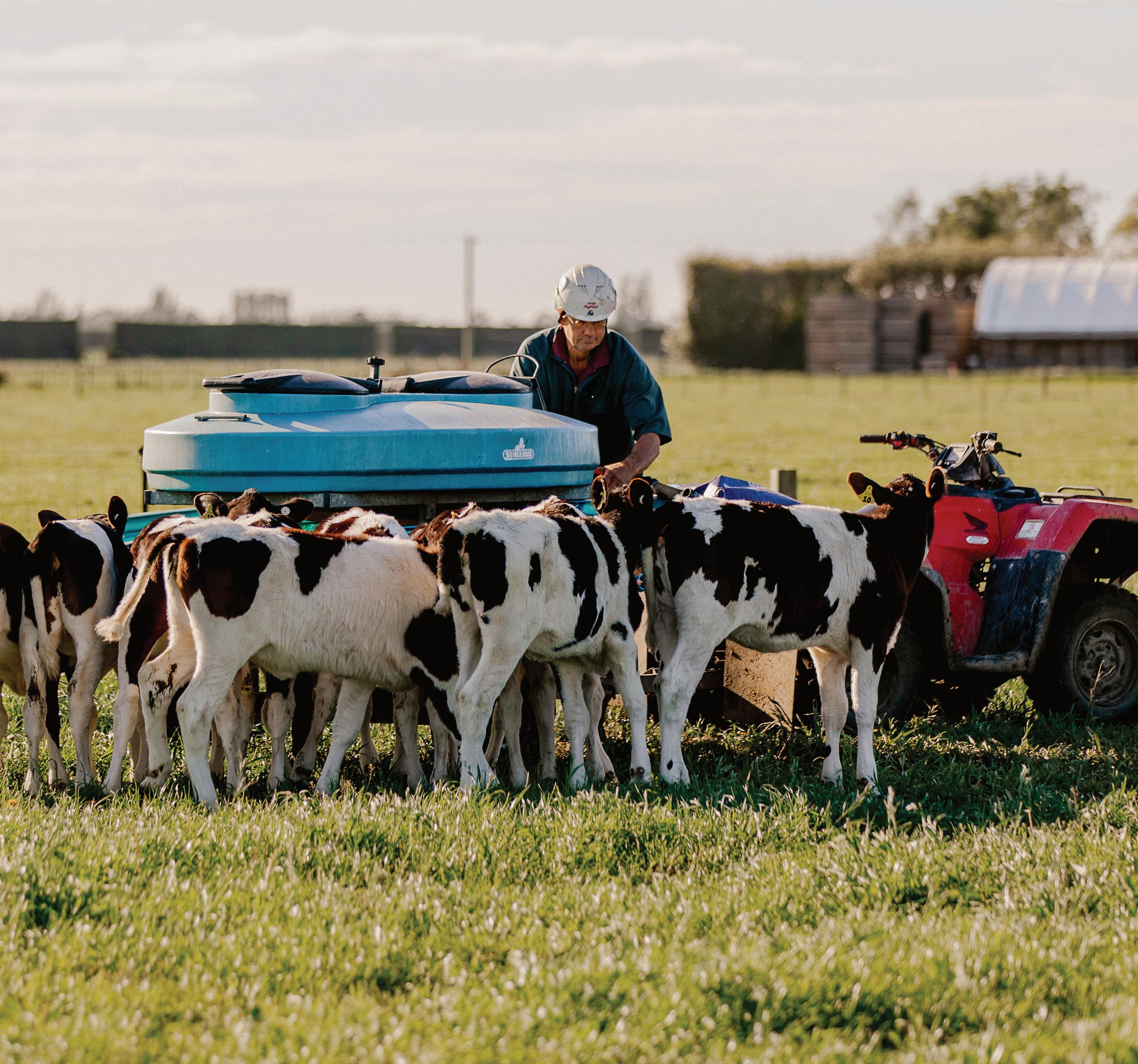
Farmers who have predominantly used LIC genetics over the last 10 years have doubled the rate of genetic gain in their herds. Greater application of genomic technology in our breeding programme, alongside farmers’ sharper focus on herd improvement, have been key contributors to the faster rates of genetic improvement we’re seeing.
Breed your herd, your way. Accelerate genetic gain with our top-performing Premier Sires® teams, generate more heifer replacements with sexed semen or focus on animal health by choosing bulls bred to be more resistant to facial eczema. Consider beef genetics to broaden your revenue options and short gestation length semen to condense calving.
So, continue setting yourself up for success with a strong breeding plan. Talk to your Agri Manager today or visit lic.co.nz

There's always room for improvement
NIGEL MALTHUS
THE LINCOLN University Demonstration Dairy Farm (LUDF) is crediting a raft of improved management practises in achieving a big turnaround in empty rates.
The farm has typically had a notin-calf rate in recent years of 18-20%, but achieved 12% for 2022 mating, and 9% for 2023.
Antoinette Archer, the partnership and demonstration lead for the South Island Dairying Demonstration Centre (SIDDC), the partnership that runs the farm, said reproductive performance hadn’t been where it should be, for “quite some time”.
“The collars generally will give you rumination, it’ll help with heat detection, and it can also give you a bit of an illness or sickness measure as well.”
That meant a higher than ideal replacement rate coming into the herd, which impacted both financial and greenhouse gas emissions performance.
“By not having as many replacement animals coming into the herd, you can reduce your greenhouse gas footprint by rearing less animals every year. So that was a core driver.”
Much of the turnaround is due to an increased emphasis on supporting body condition though calving and into the next mating round, while a key change was putting Allflex SCR collars on all cows.
“The collars generally will give you rumination, it’ll help with heat detection, and it can also give you a bit of an illness or sickness measure as well,” said Archer.
Farm manager Peter Hancox said the collars have allowed better management and more accurate records, which brings more confidence in using tools like PG (prostaglandin) to cycle the phantom pregnancy cows.
“Five weeks after the end of week one of mating we preg-test the cows that are held in there, to make sure that they are confirmed in calf. And then we do that each week for three or four weeks, we’re picking up cows that haven’t cycled again but they’re not in calf either, so we’re able to give them a PG shot,” said Hancox.
Archer adds: “Up until now you normally leave it to do your earlies and your lates in February, whereas here you can check them earlier because you know that they’ve being inseminated, but you know that they’re not cycling from the collars.
“So you can just go in and check a portion of the herd rather than having to check every animal with it costing a lot of money.”
The farm is all AI mating, and the use of short-gestation semen has allowed them to extend mating from 10 weeks to 12 without adversely affecting the calving period.
The collars also allow the farm to monitor rumination time of cows post-calving, to decide when they are ready to rejoin the main milking herd.
“The cows are milked just once a day post-calving for at least 10 days or when they return to 450,” said Archer.
“So some cows might be 12 or 14 days but once they recover to 450 minutes per day of rumination, we’ve deemed them to have recovered from calving so then we push them into the milking herd, which is, for us, ten in seven.”
Another factor is transition feeding. LUDF gives extra ad-lib baleage to the colostrum cows to make sure they’re eating well, for quick recovery after calving.
Archer said that body condition scores will normally drop after calving, possibly by 1 full BCS point.
“We try to limit it to 0.5 and we limited it last year to 0.2 and the year


before that I think was 0.4.” Blood testing for non-esterified fatty acids (NEFA) has confirmed the improvement.
Archer explained that high NEFA levels show that cows are mobilising body fat into their bloodstream at the expense of body condition, while good feeding keeps the NEFA levels low.
“Getting energy into them actually keeps their body condition score on.”
Meanwhile, LUDF is also looking at spring pasture levels, having previously recorded a marked drop in conception rates between weeks five and nine of mating.
Archer said that, because the farm is grass-based, with baleage as the
only supplement feed used, feed levels in spring can be a bit of a challenge and the drop seemed to be linked to an energy imbalance between the herd’s needs and pasture availability. Higher applications of spring urea appear to have improved late-mating conception rates and the farm will be doing the same this season.
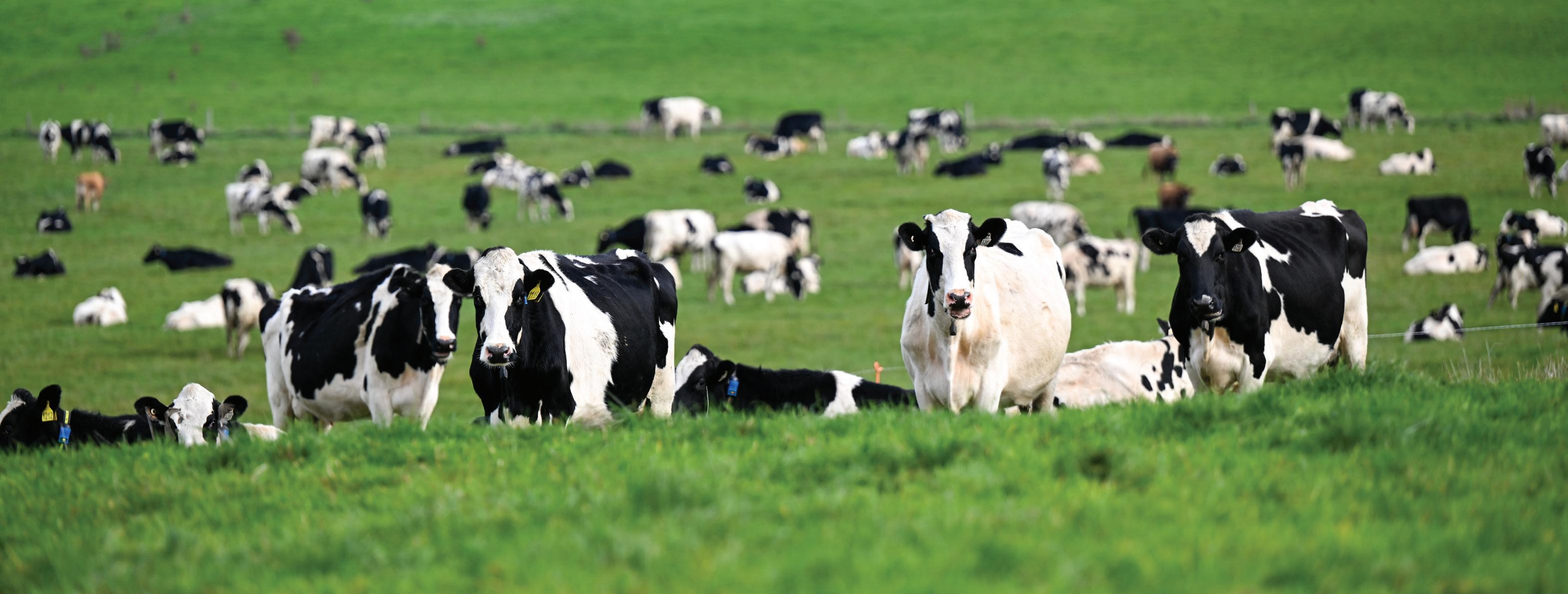
MARK DANIEL markd@ruralnews.co.nz
GILTRAP’S NEWEST forage wagons, the G-Max Series, is backed by more than five decades of experience that raises the bar to new levels.
Offered in six models, the G-Max 9, 11, 13, 16, 21 and 25 machines mirror their cubic capacities, at its heart using a heavyduty bin featuring stainless steel panels resistant to the corrosion and wear encountered with silages.
All wagons are built “scale-ready” featuring a double chassis with mounting points, allowing retro-fitment
of load cells that allow wireless weighing for feed management.
Complementing the stainless-steel bin construction, a new ecofriendly HDPE plastic floor offers reduced friction and improved load sliding properties, with excellent UV resistance. Twin heavyduty floor chains-of 13mm section on the G-Max 13 or larger models offer a 22-tonne breaking strain for each chain, with improved performance over roller chains in harsh conditions, alongside minimal maintenance, other than occasional tensioning.
Both the floor and the
elevator elements feature a gearbox transmission, able to handle heavy loads, alongside a smooth torque loading.
Meanwhile, cast iron bushes are fitted to high load shafts, with stainless-steel chain tensioners fitted for durability and wear resistance and the removal of any seizure risk from rusting.
Further detail sees large diameter, high tensile steel chain sprockets, delivering maximum chain wrap and reduced wear, while centralised remote greasing banks help to simplify routine maintenance.
The newly designed belt discharge conveyor,
increased from 900mm to 1200mm wide, allows increased feed rates and ease of feeding, particularly when using round or large square bales. At the same time, load sensing hydraulics ensure an even feed rate is maintained. The standard manual control system can be upgraded to a wireless and automated control, linked to the optional weighing system.
The heavy-duty, walking beam axles, replaceable, selflubricating Vesconite pivot bushes and oversized stub axles with sealed hubs offer excellent terrain following and minimal
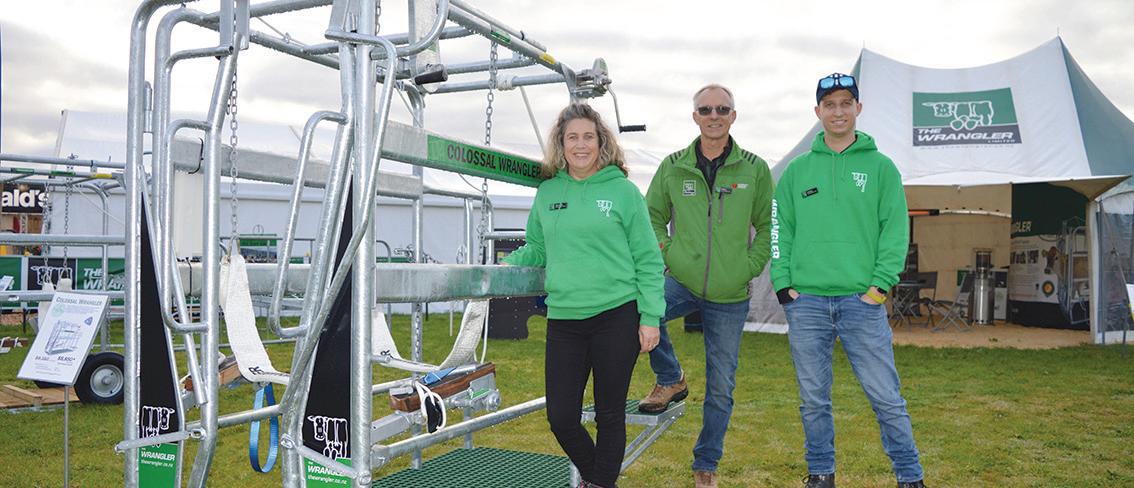
THE WRANGLER has been making hoof care a breeze on farms since 1995.
It’s touted as safe for the cow, safe for the farmer, as well as quick, easy, and efficient.
Now, the family-owned manufacturer has a new Wrangler for herds with big and tall cows.
The Colossal Wrangler is said to be perfect for herds with tall cows, or cows weighing over 650 liveweight.
The manufacturer says it is 150mm higher and 150mm longer than a Race Wrangler, with thicker walled steel.
“The winches are still within easy reach with a covered chain drive bringing the belly winch handle to hand height, and a removable step makes operating the braked backleg winch easy.
“The Colossal comes standard with all the ‘works’ upgrade fea-
tures: winched front foot supports, walk thru headbail, and stainless steel braked backleg winch, as well as extra removable side bars, and green grating.”
The manufacturer says whether you are planning a new shed or improving an existing one, a Wrangler is essential equipment.
“The double belly straps hold the cow, immobilising and relaxing her, and preventing her from ‘going down’ and breaking a hip during treatment.
“The back hoof is then winched to a supporting bar leaving the operator with both hands free and out of the way of the knife. The front hoof is held securely on the front foot wooden block.”
The Colossal Wrangler comes with two 150mm underbelly girths on a 25:1 geared belly winch. Its front foot supports allow the operator to easily winch the hoof onto

Up front, a sleek, narrow drawbar aids manoeuvrability, incorporating a flangemounted, swivel tow eye, which can be upgraded to a K80 ball hitch if required. Strong angled steel mudguards keep things clean and ensure any spilled feed slides off at the loading site, before getting carried onto
roads or tracks.
Mesh front bulkhead and rear tailgate screens improve visibility during loading and use, with the latter also incorporating tail lights, crash locks for load reversing, while a ladder offers safe access into the bin as required.
A range of options includes wireless weighing, a chain and slat discharge conveyor,
hydraulic side shift of up to 200mm and conveyor extensions for delivery into bunkers, troughs or feed rings. For those travelling any distance, upgrades to tyres, braking systems, suspension and steering axle options will help achieve smooth travel, safe stopping and reduce tyre scuffing and chassis fatigue.
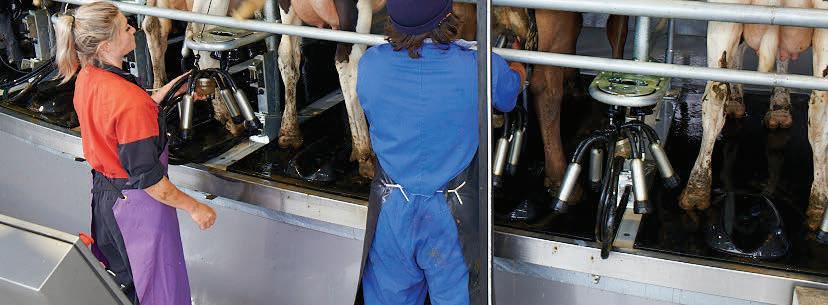
the wooden support block, held in place by a strap and secondary braid so the hoof can’t move. The backleg is similarly winched onto a support bar which holds the hoof so the operator has both hands free for treatment. The stainless steel backleg winch is geared 4.5 to 1 for easy operation and it has a disc brake for safety.
Installation into an existing shed is easy. The Colossal has predrilled holes for dyna bolting into existing concrete. It is wide at 850mm and 2100mm long (floor frame).
“Simply place at the end of your vet race, in a pen at the yard, or cut away existing pipe work and drop the Colossal Wrangler into place,” says the manufacturer.
The Colossal Wrangler can be used for all veterinary procedures including calving, caesareans, retagging, or examining an individual cow.



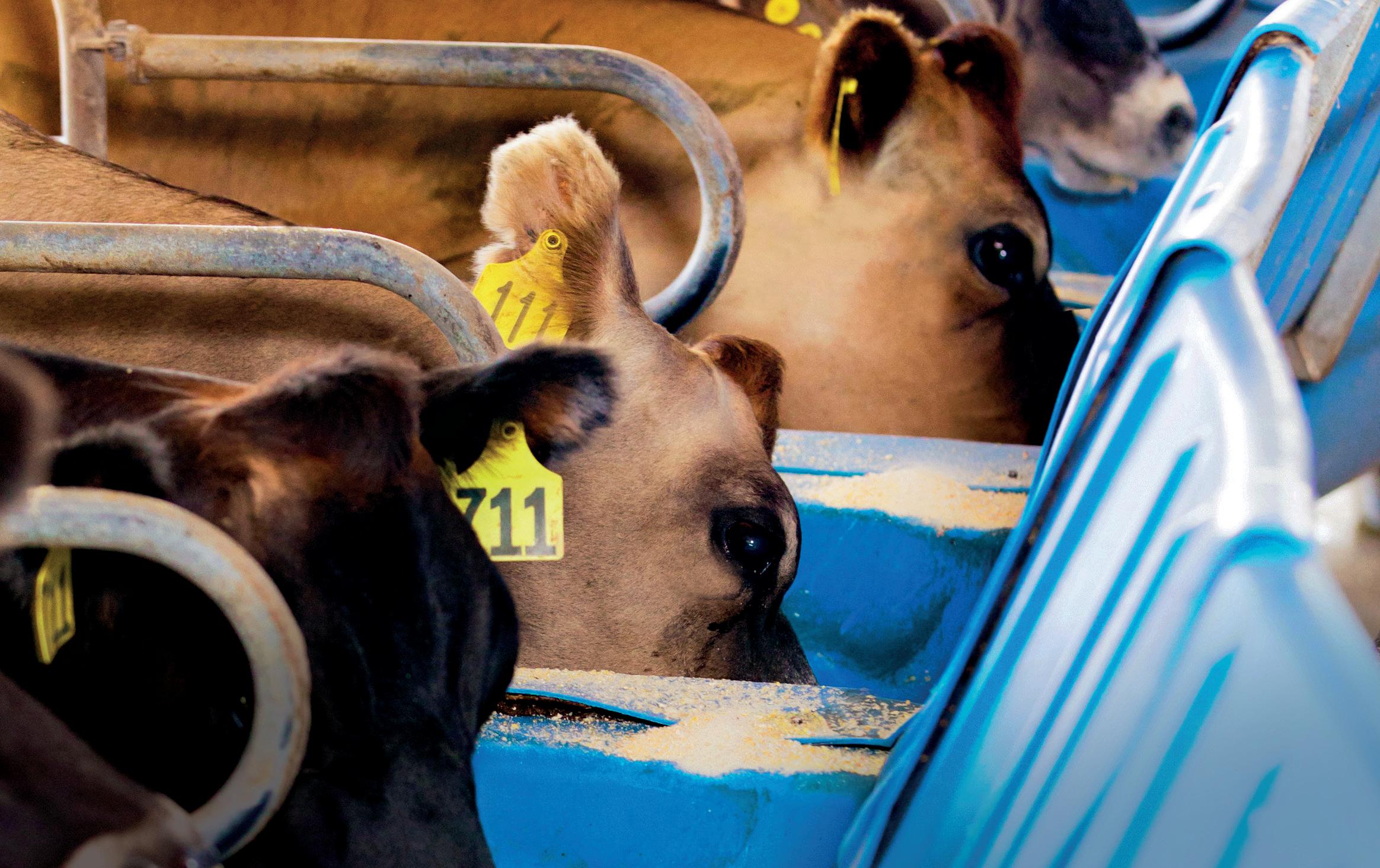
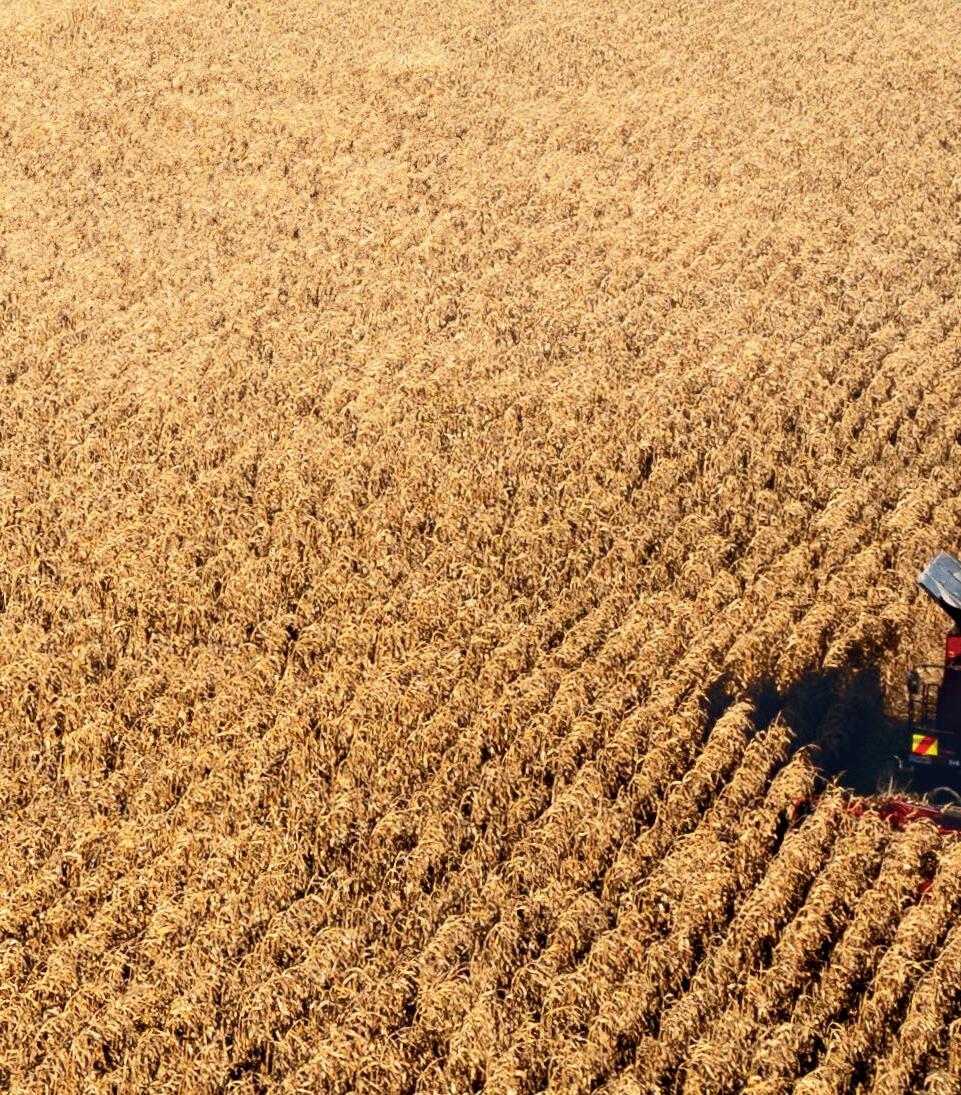









Turning paddocks around faster than ever.
Save time, drive down input costs and turn paddocks around faster with FarmChief’s modern, speed disc cultivators.
Ideal for eliminating pugging and compaction after winter feed, exceptional at dealing with stubble and trash, and commonly used for opening up sprayed-out grass paddocks. The ExpressPlus is becoming NZ’s go-to choice for productivity gains and cultivation excellence.
Cover more ground and produce a better finish with the HD build and optimum-angle cutting discs designed specifically to achieve premium results at working speeds up to 16km/h.
Stock ready to go - contact us now: sales@farmchief.co.nz

*50%
We’ve combined the best parts of our world-class rippers and cultivation discs to revolutionise spring ripping.
The NSL Chisel Plough from FarmChief features auto-reset tines to open up pugged, dense winter feed paddocks, aerate the soil and incorporate layers, whilst the vertical tillage Double Wavy Discs slice and dice the soil, eliminating large clods for an optimum first-pass result.
Ready for secondary cultivation with power harrows or a maxitills, you’ll be drilling the paddock earlier and enjoying higher yields and increased crop performance.
Demonstrations available nationwide.
Enquire today: 0800 327 624

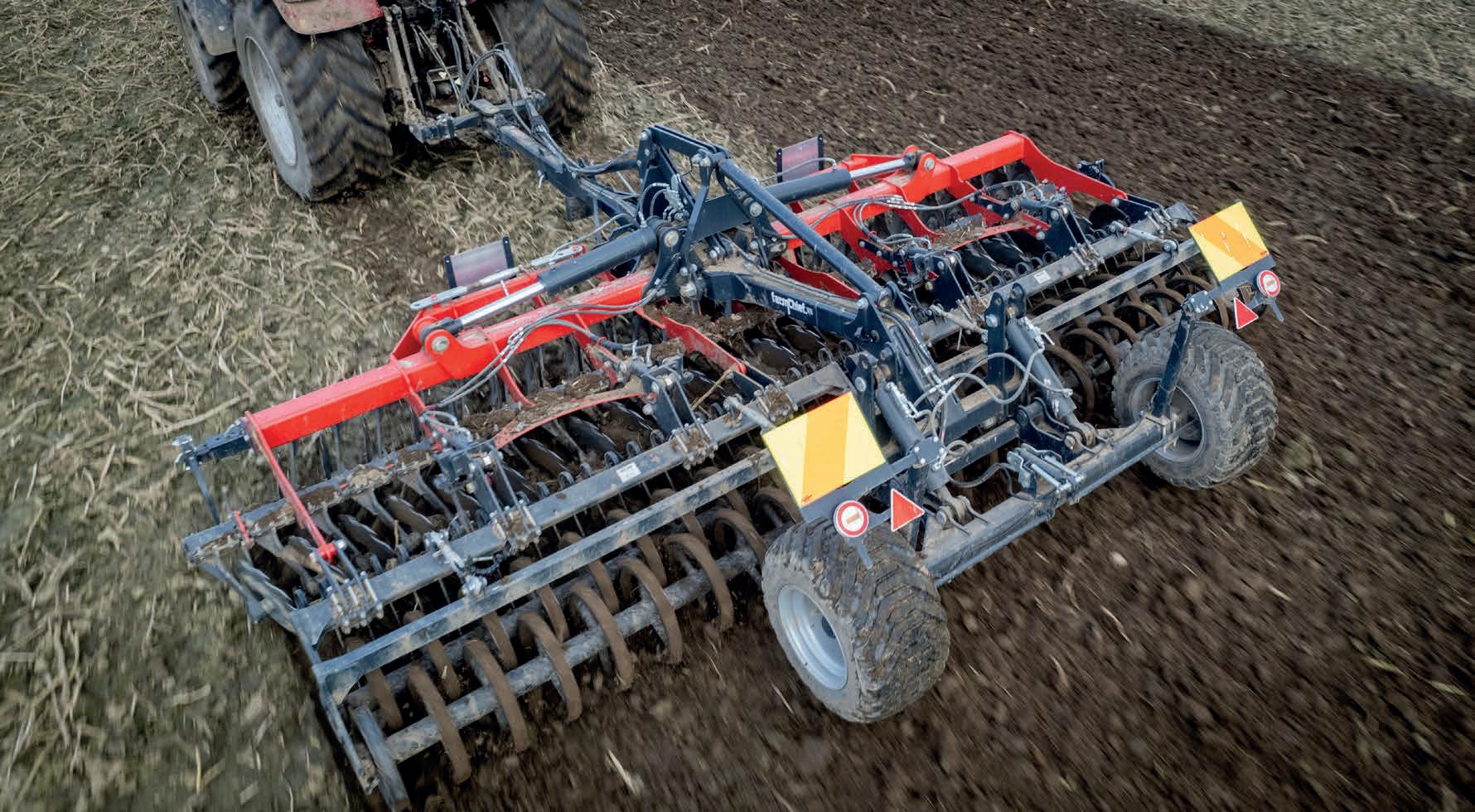
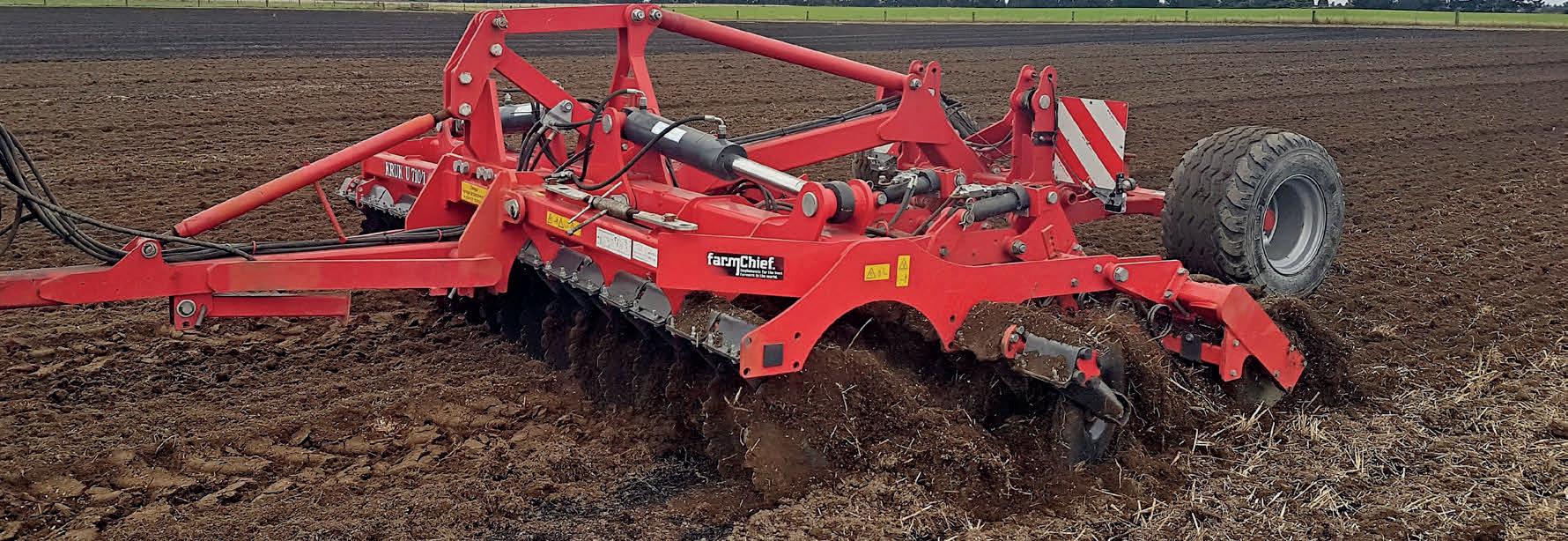
Proudly New Zealand owned & operated for close to 50 years.
Demonstrations available across the country! Visit www.farmchief.co.nz or call 0800 327 624
